An interview with environmental film director Josh Tickell
The Three R’s Do you know how to prioritize them?
A Big Need and a Tiny Home Sedona Charter School addresses housing costs for teachers



An interview with environmental film director Josh Tickell
The Three R’s Do you know how to prioritize them?
A Big Need and a Tiny Home Sedona Charter School addresses housing costs for teachers





Over one third of food produced in the US is never eaten. This waste ends up in landfills where it produces methane, a greenhouse gas far more potent than CO2. In fact, if food waste were a country, it would be the thirdlargest greenhouse emitter in the world.
It’s easy to see that we need to keep food out of the garbage, but until now, the solution wasn’t so easy. Composting takes a lot of effort. Mill takes none.
Mill works while you sleep to shrink your food scraps by 80%. You can put almost anything in it — even small bones and meat — and it dries and grinds it all into nutrient-rich grounds. Thanks to state-of-the-art odor filtration, Mill never smells and won’t attract fruit flies, and the 6.5L capacity means you only have to empty it about once a month. But the best part? It keeps food out of the landfill.

Mill has partnered with R.City, a South Phoenix farm that grows fresh produce for the community. When you sign up for Mill, R.City will pick up your grounds from your doorstep once a month, and they’ll turn them into compost to nourish their crops and grow more food. You can even add on a fresh farm box delivery from R.City and enjoy the veggies your food helped grow.
Awards
Winner of Fast Company’s Most Innovative Consumer Company in 2024
Time Magazine Best Inventions of 2023




 By Michael Geyer
By Michael Geyer
Water, oxygen, and minerals are the essence of life — essential for sustaining health and vitality. Water flows through our planet like blood through veins, nourishing all forms of life and maintaining balance in nature. Pneuma Industries' Genesis series soaking tubs harness the power of water and oxygen to promote wellness like never before.
The Genesis series features soaking tubs equipped with Pneuma Industries' patented Hyper Dissolved Oxygen (H.D.O) system, offering a unique soaking experience. Immersing in these tubs saturates the body with oxygen, similar to a hyperbaric chamber but without the constraints. Increased oxygen levels in the body have long been associated with improved cardiovascular health, reduced inflammation, and enhanced recovery. The Genesis tub simplifies access to these benefits with daily soaks lasting just 25 to 60 minutes.
With user-friendly controls, the Genesis series includes two models: the warm soaking tub with temperatures up to 104 degrees Fahrenheit and the cold plunge version offers temperature control ranging from 38 to 104 degrees Fahrenheit. Featuring oversized filtration, medical-grade oxygen concentrators, and durable construction, the Genesis series sets a new standard for soaking tubs.
Our bodies, composed largely of water, depend on the quality of the water we consume. As water travels through the earth, it absorbs minerals crucial for health. Oxygen plays a vital role in transporting these minerals throughout the body, forming a symbiotic relationship between humans and water. This interaction is not just about nourishment but also cleansing, as water removes toxins from our bodies.
The quality of the water we engage with daily directly impacts our health. Choosing sources rich in beneficial minerals ensures optimal well-being. This dynamic underscores the intricate connections between water, oxygen, minerals, and life itself, emphasizing the importance of preserving these vital resources for our health and the health of the planet.
Pneuma Industries' Genesis series soaking tubs, enhanced with oxygen, offer a luxurious yet straightforward path to enhance your wellness journey. Designed for relaxation, recovery, or rejuvenation, these tubs are meticulously engineered to unlock the numerous benefits of oxygeninfused soaking. Embrace this innovative approach to wellness and allow water to be the elixir guiding your path to well-being.

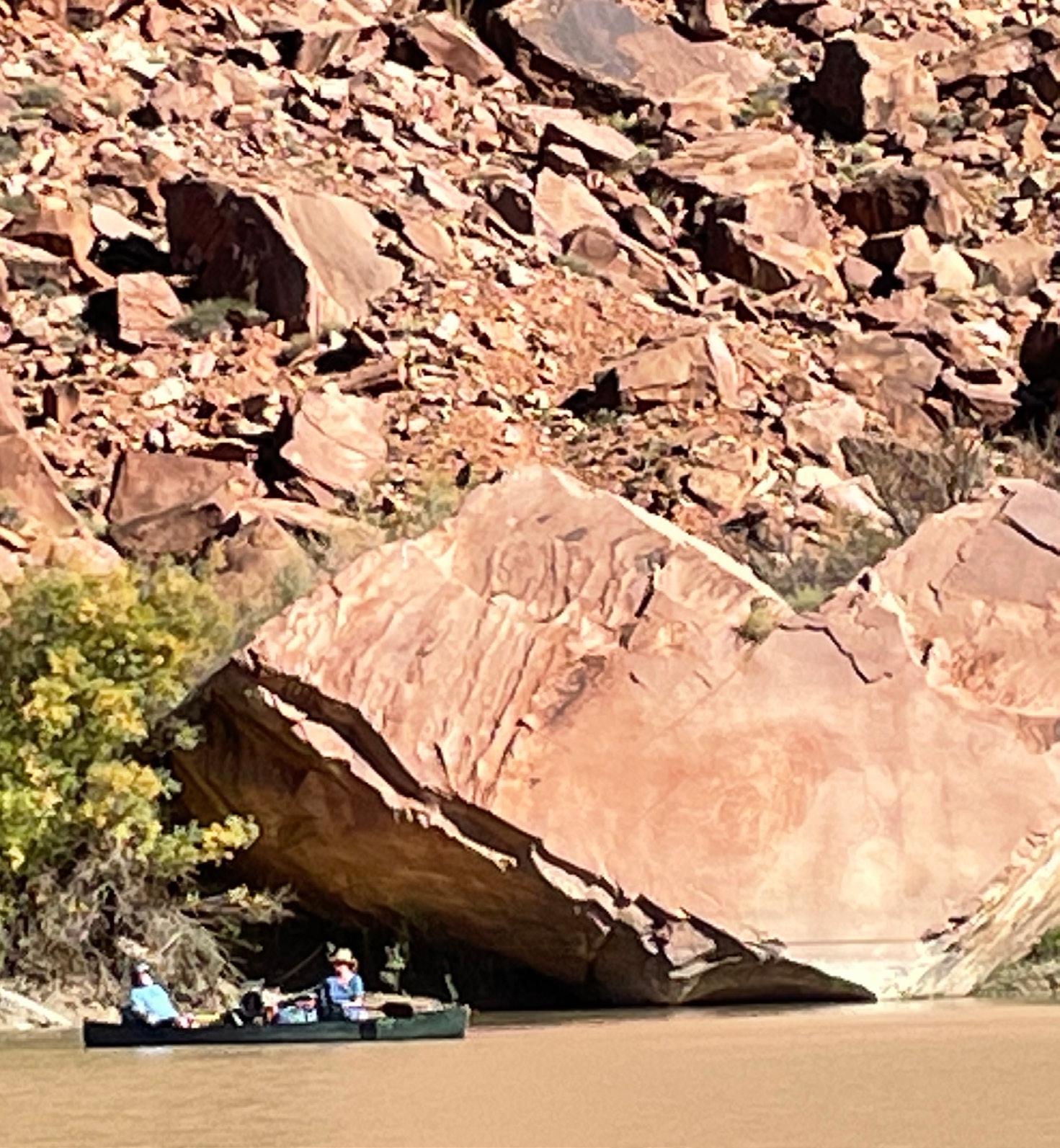
This


It’s officially Earth Month — although we should be, of course, considering the Earth year round. This month is special for our magazine, as we get to do a deeper dive into all things sustainable and explore different stories that celebrate the Earth and all that it provides for us.
Our cover story — we think — is extra special. Last month, our team had the opportunity to host a special screening of Common Ground — the highly anticipated follow up to 2020’s Kiss the Ground, a documentary that moved the USDA to invest $20 billion in soil health. Following the screening, attendees were treated to a truly special panel discussion that touched on pointed aspects of the film. Panelists included Rick Clark, an Indiana regenerative farmer featured in the film; Lisa Kaiser of Pinedora Farms; Harry Tannenbaum of composting innovator Mill Industries; and Ginger Sykes Torres, executive director for the USDA Farm Service Agency. The panel was moderated by JD Hill, founder of R.City.
If you haven’t seen the films, I highly recommend both. They provide an honest and sobering look at the state of our food production and how it affects our farmers, our environment, and ultimately, the world’s population. It’s not all doom and gloom, though — the films provide evidence that regenerative farming can help us to fix our soil, and in turn, the damage done to our environment. Sounds too good to be true, right? Just watch, listen, and learn, my friends.
Speaking of saving the planet, while you’re perusing this month’s pages, take a peek at Joan Baron’s special story on bees. Learn about their role in agriculture, how you can assist these little helpers in their role as pollinators, and how to deal with an unexpected hive in your home.
Finally, take a ride down the Green River with featured writer Chana Widawski, as she chronicles her journey with The River’s Path, an exclusive canoe adventure company that aims to help clients reconnect with the land and find a profound sense of belonging within the mystical canyons of Utah. This month, pick one small thing — make one small change in your everyday life — that you can adopt moving forward to make a difference for our planet. Whether it be switching to biodegradable dental floss picks (pg. 12), being more mindful about what you put in the recycle bin, or choosing to reduce the amount of goods you purchase and consume (pg. 14), we’ve got all of the eco-inspiration you can handle in this month’s issue. Remember, small changes add up to big results when we all pitch in.
Share your Earth Day ingenuity with us on Facebook (@greenlivingazmag), Instagram (@greenlivingmag) and Twitter (@greenlivingaz).
Thanks for reading,
Shelby Tuttle Managing Editor

Joan Baron, writer
Joan Baron is an environmental and social practice artist/educator with a deep passion for urban farming in small spaces. Her community activism inspires and encourages others to participate in and observe the regenerative practices of plants and trees. Joan often provides garden tours, consultations, workshops, and presentations. For more information, visit www.joanbaron.com.

Chana Widawski, writer
A writer and social worker, Chana Widawski works socially across the globe, both formally and informally, helping people share their personal stories to foster human connection, personal healing, conflict transformation and even policy change. Her work ranges from running comprehensive programs of trauma informed support services, social activism and legislative advocacy to spearheading a free store and neighborhood sharing hub, leading immersive nature experiences, helping design a restorative justice program, BIObiking globally and community organizing locally.



/greenlivingazmag @greenlivingmag

In honor of Global Recycling Day on March 18, Wine Girl — a popular wine bar with locations in Scottsdale and Napa Valley — proudly shared how its eco-friendly practices have helped save thousands of wine bottles from ending up in landfills.

For over two years, The Ravenscroft — Arizona’s premier jazz venue nestled in the heart of Scottsdale — has been a haven for music enthusiasts, curating a monthly lineup that seamlessly blends the soulful tunes of both established and emerging artists.

The U.S. Forest Service has taken a significant step towards protecting the Upper Verde River. A 36-mile segment was deemed “suitable” for Wild and Scenic River designation, recognizing its exceptional scenic beauty, recreational opportunities, cultural significance, and vital fish and wildlife habitat.

We had an absolutely wonderful time at the 11th Annual Art d’Core Gala, featuring breathtaking art, fashion, culture, and so much more.

Green Living was proud to host an exclusive showing of “Common Ground,” the highly anticipated follow up to “Kiss the Ground” from film makers Josh and Rebecca Tickell.
Pilates will take you on an exhilarating journey of strength, flexibility, and mind-body connection. Get ready to sculpt your core, improve posture, and deepen your breathing. Whether you’re a rookie or a Pilates pro, let the excitement guide you towards a body transformation you’ve always dreamed of!
Come Try Pilates today!
Scan the QR code for your Free 7-day VIP Membership


VILLAGECLUBS.COM







Fast Company recognized Gensler for its industry-leading building conversion tool — a first-of-its-kind algorithm that is helping convert empty offices into housing globally. The algorithm has enabled the firm to evaluate the viability of over 1,300 projects in 130 cities and reduces the time to assess a building for conversion from weeks to minutes. This improves the ability for cities around the world to address the combined crises of chronically high office vacancies, housing shortages, and the impact of climate change.

On March 7, Nokia released its 2023 sustainability report highlighting performance relating to its sustainability strategies. Highlights include a reduction in total greenhouse gas emissions by 11% from 2022 and reaching its renewable energy target, with 75% of purchased electricity across Nokia’s global facilities coming from renewable resources.
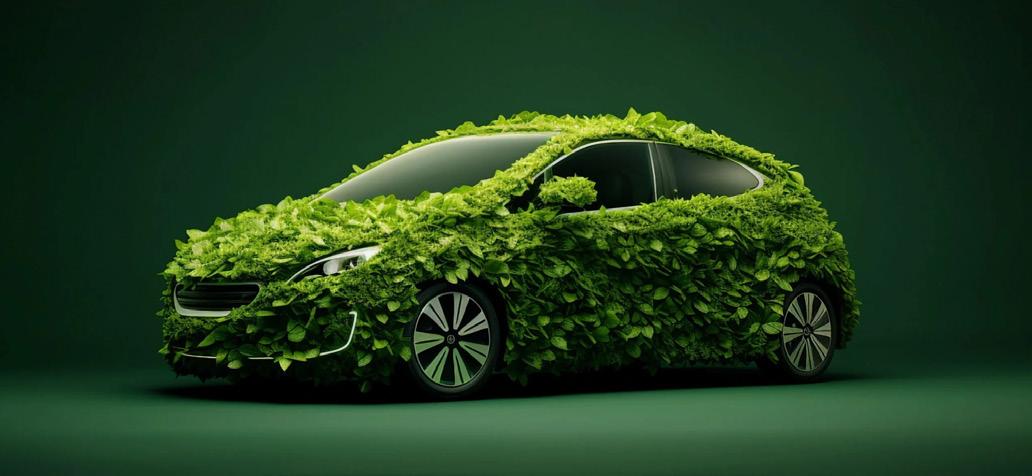
“EPA’s clean car standards will put the pedal to the metal as the U.S. races to achieve cleaner, healthier air for everyone,” said Amanda Leland, Executive Director of Environmental Defense Fund. The EPA will soon set its new standards for clean cars, trucks, and medium-duty vehicles in model years 2027 to 2032.

Mitsubishi Motors North America recently announced its recognition of the “Most Improved Alternative Powertrain Loyalty for 2023” by S&P Global Motility. The award honors Mitsubishi’s success in its ability to retain owners to both the brand and either a BEV or hybrid vehicle offering.

On March 4, the MethaneSAT lifted off aboard a SpaceX Falcon9 rocket. The purpose of the MethaneSAT satellite is to accelerate reductions of a powerful greenhouse pollutant, focusing first on oil and gas operators with the goal to protect Earth’s climate.










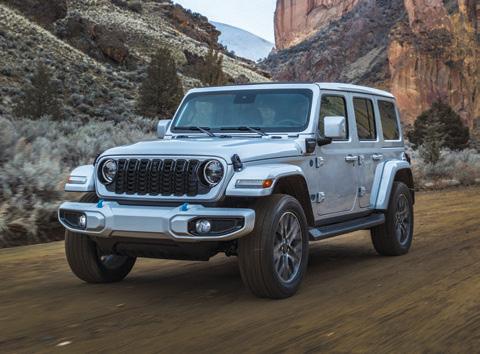

Looking for a more earth-friendly way to wipe away germs from surfaces? biom sells a selection of Earth-friendly wipes – all-purpose, flushable, and sanitizing – including kits and refills to keep up the cleanliness. The All-Purpose Cleaning Wipes Starter Kit is described by biom as “our top-selling ‘everything wipe.’ Safe and effective on both skin and surfaces.” The kit’s refillable BPA-free dispenser is available in eight colors. Choose from unscented or scented wipes (Lavender Ease, Grapefruit Zest, or Santal Natura) – they’re also biodegradable, plant-based, and made with aloe. As a Certified Plastic Neutral™ company through a rePurpose Global partnership, biom’s dedication to helping the planet runs deep. www.getbiom.co
This eco-conscious choice works towards whiter teeth and a greener Earth. The persistence of plastic in toothbrushes isn’t just found in many manual ones, but many electric toothbrushes, as well. Enter Suri’s Sustainable Electric Toothbrush, with a battery body formed from aluminum and recyclable, plant-based toothbrush heads created from cornstarch. The toothbrush’s battery lasts for 40 days and can clean your teeth in two modes (clean and polish). Choose from four colors and a UV case add-on option; all toothbrushes come with a USB charging stand and a magnetic mirror mount. Suri even offers a prepaid mailer for customers to send back used toothbrush heads for free recycling. www.trysuri.com




Packing lunch or snacks in reusable zip/fold bags might leave a mess for users to clean when they get to the nearest sink, or worse – when they get home later. Compostable bags, like the multiple options sold by Cleanomic, offer a low-waste solution that can be composted “in a commercial facility.” Cleanomic’s Compostable* Zip Bags come in multiple size options (gallon, quart, and sandwich). These strong, resealable sacks are a soft green color and arrive in a plastic-free container. The Zip Bags are proudly BPA free, BPI Certified Commercially Compostable, suitable to put in the freezer, and of course, food safe. www.cleanomic.com
The convenience of individual flossers can’t be beat, but daily use requires users to throw away one piece of plastic every day. Lend a hand in helping the Earth by switching to something that doesn’t stick around on the planet as long. SmartLifeco’s Biodegradable Dental Floss Picks are available in Mint, Charcoal, and Unflavored, with purchase and subscription options. Each bag of floss picks holds 50 pieces, and each flosser has a toothpick end and a straw wheat handle (though they’re gluten free). These pristine picks are also cruelty-free, vegan, and comfortable for hands to hold. www.smartlifeco.com
One of Blueland’s bestsellers, The Clean Essentials starter kit gives buyers the chance to bring home multiple beloved products in one bundle. Its four items inside truly have the Earth in mind: Blueland’s Foaming Hand Soap, Multi-Surface Cleaner, Bathroom Cleaner, and Glass + Mirror Cleaner. These products boast clean ingredients and eco-friendly certifications. The Clean Essentials kit comes with one Forever Bottle and one refill tablet per cleaning product. To use, blueland.com explains: “FILL your forever bottle with warm water to the half round, DROP in a tablet, let it dissolve, and put on the nozzle or pump, and CLEAN your hands and home.” www.blueland.com


TThe “Three R's” — reduce, reuse, and recycle — form the cornerstone of the sustainability movement, each playing a crucial role in our collective responsibility to safeguard the environment. They are listed in order of their environmental impact, with reduce holding the highest priority.
By minimizing consumption and reducing waste, we can significantly curb the amount of resources needed to produce new goods. Reuse follows next and focuses on extending the life cycle of items and preventing them from becoming waste too soon. Lastly, recycle aids in diverting waste from landfills, instead converting it into material for new products.
“Reduce” is paramount in the hierarchy of environmental impact for good reason. This concept calls for a fundamental shift in our consumption patterns, urging us to limit our purchase and use of goods. Choosing to reduce not only minimizes the immediate waste output but also curtails the upstream costs in terms of resources and energy expended on production. In essence, every item that
we don't buy saves a significant amount of natural resources and energy that would have been expended in its creation.
“Reuse,” the second pillar, is equally vital. By extending the lifespan of items and giving them a second life, we can significantly decrease the demand for new products. This means a decrease in manufacturing processes, which are often resourceintensive and a major contributor to pollution. Reusing items like clothing, furniture, and electronics can drastically reduce the need for new goods and, in turn, the resources used and the waste produced. Ultimately, reuse contributes to the circular economy, an economic system aimed at eliminating waste and continually re-using resources.
“Recycle,” the third and final pillar of the Three R's, is arguably the most readily adopted by the general public. The process of recycling involves collecting and processing materials that would otherwise be discarded as waste, transforming them into new products. This presents a tangible method for individuals to contribute to environmental sustainability. One of the reasons recycling appeals to many is that it requires minimal lifestyle or habit changes. Simple actions such as separating recyclables from trash, using recycling bins, and dropping off recyclable materials at designated locations are all it takes to make us feel like we’re making a significant impact.
Moreover, recycling has been made more convenient and accessible due to widespread public infrastructure and support. Many cities offer curbside collection programs for recyclable materials, and recycling centers are commonplace. These initiatives encourage participation by making recycling an easy, hasslefree task. The immediate payoff — seeing waste being turned into valuable material — also offers a sense of accomplishment.
While reduce and reuse require a more conscious effort and a shift in consumption habits, recycle provides an easier transition towards sustainable living. Thus, recycling can serve as an accessible entry point, sparking environmental awareness and potentially leading to more committed sustainable practices.
While recycling is no doubt a worthy endeavor, it is unfortunately less effective than many people believe due to a variety of factors. The first of these is the harsh reality that a significant percentage of items placed in recycling bins never actually gets recycled. According to the Environmental Protection Agency (EPA), as of 2018, only 32% of waste was recycled in the United States. This figure is even less encouraging when looking at specific materials. For instance, despite plastic being a commonly used material, its recycling rate is a mere 8.4%.
The reasons for this are multifold. For one, many items that we attempt to recycle are often not in a condition suitable for recycling. Contamination, caused by food remnants or non-recyclable materials mixed with recyclable ones, can render entire batches of recyclables useless. Additionally, not all recyclable materials are equal. Some, like single-use plastics and certain types of packaging, are not economically viable to recycle due to their low-quality nature. As a result, these items often end up in landfills or incinerators despite being placed in recycling bins.
Secondly, the global market for recyclable materials is also a contributing factor. In the past, countries like the U.S. have relied heavily on exporting our recyclable waste to other countries, primarily China. However, with China's 2018 policy banning the import of most recyclable materials, the dynamics of the global recycling market have been disrupted. This has resulted in a surplus of recyclable materials in countries that previously exported their waste, leading to an increase in recyclables being dumped in landfills or burned in incinerators.
An egregious example of the misuse of recycling can be seen in the case of plastic waste exports to developing countries. Many Western nations, including the United States and the United Kingdom, have long been shipping vast quantities of plastic waste to less developed nations under the guise of recycling. However, once these exported plastics arrive in

countries such as Indonesia, India, or Malaysia, they often just pile up, unable to be processed effectively due to insufficient recycling infrastructure. The overflow from these haphazardly managed waste sites often finds its way into streams and rivers, and ultimately, the ocean, contributing significantly to marine pollution. It's a distressing reality that highlights the urgent need to revamp our global waste management systems and reinforces the importance of the first two of the 'Three R's' — reduce and reuse.
While the concept of recycling holds promise and has its benefits, it is not as impactful as it might seem due to the inefficiencies in the recycling process and global market dynamics. Therefore, it is of utmost importance to prioritize reduce and reuse before recycle. By making conscious decisions to consume less and extending the lifespan of items we already own, we can make a greater impact in our journey towards a more sustainable planet.
GGood news for eco-conscious eaters! Upfield, a leading name in plantbased foods, has unveiled a groundbreaking innovation: the world's first plastic-free and recyclable tub for its popular plant-based butters and spreads.
This exciting development comes after four years of dedicated research and development by Upfield, in collaboration with Footprint, MCC, and Pagès Group. It marks a significant step towards Upfield's ambitious goal of reducing plastic content across its entire product portfolio by a staggering 80% by 2030. This equates to a major environmental benefit and means that if the goal is met, the company will replace two billion plastic tubs with its new paper solution and prevent over 25,000 tons of plastic waste from entering our landfills each year.
“We take our responsibility to make a positive impact on the world seriously,” said David Haines, group CEO for Upfield. “Globally, 40% of all plastic produced is for packaging that is used once and then discarded. It is clear that the issue of plastic waste is one of the most critical facing our environment.”
The plastic-free journey began in Austria in late 2023 with the launch of Upfield's Flora Plant brand, and the success there paves the way for a wider rollout across Upfield’s larger brand portfolio. These pioneering paper tubs are no ordinary packaging. Upfield's R&D team, combined with Footprint's material science expertise, has created a solution that's both functional and sustainable.
endeavor, as it resonates with our shared objective of assisting customers in realizing their sustainability goals.”
Made from compressed wet paper fibers, the tubs are remarkably durable, boasting waterproof and oil-proof properties. They seamlessly integrate into existing recycling streams, being fully recyclable in local paper waste systems.
Upfield's commitment to sustainability goes even further. The tub has received Conventional Plastic Free Certification, and the paper used in these

tubs is PEFC-certified, ensuring it comes from responsibly managed forests. Additionally, the company anticipates achieving home compostability certification for the packaging by 2025.
“The introduction of [this] ground-breaking solution, in collaboration with Upfield, establishes a pioneering industry standard. This marks the introduction of the first oil-resistant paper tub for plant-based spreads,” said Yoke Chung, co-founder and chief technology and innovation officer for Footprint. “We are proud to collaborate with Upfield on this transformative
This innovative plastic-free tub is a win-win for Upfield, environmentally conscious consumers, and the planet. It delivers on Upfield's commitment to sustainability while offering a functional and ecofriendly packaging option for their plant-based butters and spreads.
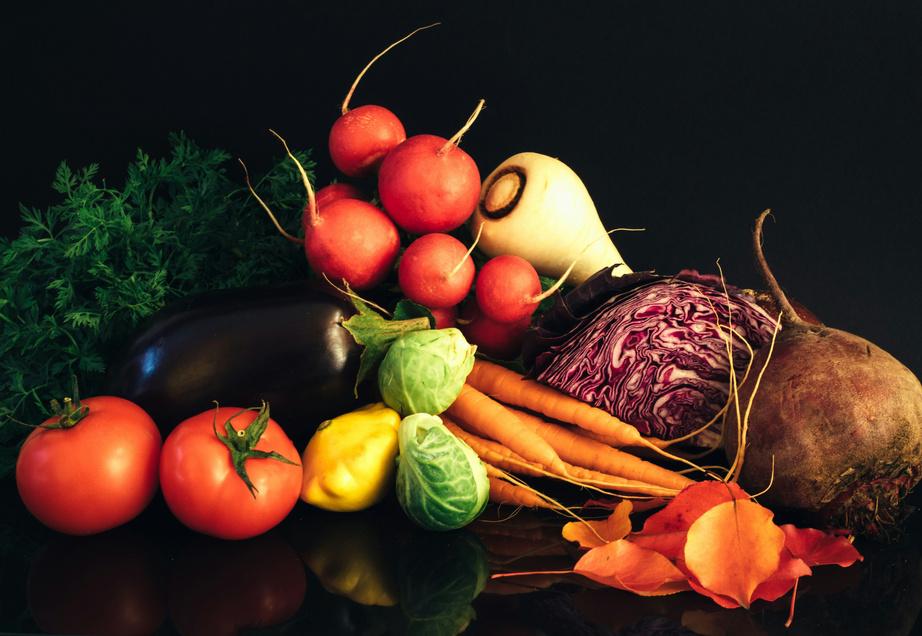






AAt this year’s 2024 WM Phoenix Open, luxury apparel brand Peter Millar partnered with Repreve to create a groundbreaking "circular" mini clothing line for the world's largest zero-waste sporting event, showcasing the power of responsible resource management and expanding the boundaries of sustainability in sports.
The partnership took plastic water bottles from last year’s WM Phoenix Open and transformed them into a stylish, three-piece collection for this year's tournament. The custom design embodies a commitment to environmental stewardship, as well as the WM Phoenix Open's unwavering dedication to sustainability.
Repreve, a subsidiary of Unifi, has become a champion for environmental conservation. By transforming over 35 billion plastic bottles into high-quality fibers, the company has significantly reduced plastic waste and reliance on virgin petroleumbased materials. Repreve works with leading brands like Patagonia, Nike, and Asics to turn sustainable materials into mainstream fashion.

sustainable with this partnership collection with Peter Millar,” he said in a statement. “Now, visitors to the tournament will rest easy knowing that the plastic bottles they use on site [during the tournament] will have a second life that they can wear to next year’s tournament.”
The WM Phoenix Open isn't just about diverting waste. The event is designed to engage attendees actively in the process, fostering a culture of environmental responsibility. Spectators are encouraged to participate in recycling and composting initiatives, making them active contributors to a greener future. But the commitment doesn't stop there. Tournament organizers also continuously evaluate and improve their sustainability practices, ensuring the event remains a pioneer in eco-conscious event management.
Jay Hertwig, Senior Vice President of Commercialization at Unifi, expressed his enthusiasm for the collaboration. “[We] are so excited to be helping make the largest zero-waste sporting event in the world, the WM Phoenix Open, even more
The Peter Millar collection for the WM Phoenix Open signifies a monumental shift towards a more sustainable future for sports and fashion alike. It's a testament to the power of collaboration and innovation, reminding us that even the smallest plastic bottle can have a significant positive impact –if we give it a second chance.



TThe climate in our desert Southwest region is well suited for individuals seeking to learn more about bees and perhaps to even explore beekeeping. And whether your interest in bees is extensive or you have virtually none at all, one thing is for certain: Their role in our ecosystem is paramount to our survival. As such, our role is to protect and nurture them.
We can assist bees in their pollinating process by planting pollinator flowers and vegetables every season to support them in growing their population — which helps to build a micro-ecosystem that supports all life. Examples are easy to find and grow in our dry, arid climate. Varieties such as cosmos, zinnias, sunflowers, luffa, lavender, marigolds, blanket flowers, lisianthus, four o’clocks, and peppers are all fabulous examples that can be easily planted in pots or garden beds at home.
Bees are also drawn to flowers of the Moringa tree, citrus blossoms, and borage plants, which are readily available at most nurseries. A good tip: Be sure to focus your purchase on organic seeds or non-gmo seeds. This helps to protect the health and well-
being of the bee during its short but busy life. Bee balm, echinacea, snapdragons, evening primrose, and California poppies are additional examples of colorful, bee-friendly plants.
As pollinators, honeybees play a significant role in food production. When they dive into a blooming flower, they perform and roll around until their bodies are covered in pollen — but they don't stop there. They’re onto the next flower until fully saturated, and they return to the hive to deposit their treasures. This intuitive and instinctive practice of transporting pollen onto other nearby plants culminates in food production. When the bees transfer pollen grains from the male anther of one flower to the female stigma of another, fertilization
happens and fruits are created. We can all appreciate that some of our favorite foods grow as a result of this process of pollination. Without it we might not have those sweet strawberries, peas, beans, cucumbers, peaches, garlic, sunflowers, sweet potatoes, melons, and so much more to enjoy.
We also benefit from their gift of fresh honey and beeswax produced in the beehives. Inside their hexagonal shaped homes or colonies, the queen bee stays busy laying eggs while the worker bees store the pollen and nectar — some for the larvae that will soon become drone or worker bees. Small hives can contain 20,000 bees, while larger hives can contain over 100,000! The many health benefits of honey — especially raw — include antioxidants, which makes honey a fantastic free-radical scavenger that protects healthy cells, in addition to being a terrific cough suppressant. Additionally, consuming local honey has been known to assist in the tempering of regional allergies. Other benefits that come straight from the hive include bee pollen, which provides important levels of vitamin A and vitamin C, calcium, and magnesium to support healthy bones. Bee propolis, a byproduct of the hive, has shown antiinflammatory and anti-fungal properties, as well.

Bees are vital to our survival and to be good stewards of the Earth requires that we protect the bees and understand Colony Collapse Disorder (CCD). Millions of bees have been wiped out in recent years due to pesticides such as Roundup and other agricultural chemicals and fungicides. A class of chemicals called neonicotinoids has been linked to bee deaths and is so serious that it has recently been banned in Europe. With its use, pollen gets contaminated from spraying fields in large farm settings and in neighborhood gardens. The best solution to this overwhelming problem is to build healthy soil through the use of organic food scraps and worms and planting cover crops such as clover, cow peas, buckwheat, sorghum, and other plants high in phosphorus and nitrogen to support energy production and plant growth, and to resist disease.
Another way that we can work to protect the bees is to make sure to leave hives undisturbed. If you ever discover a bee hive around your home or office, it’s best to seek out a professional who is skilled at relocating the hive.





Invest in Wild Tonic, Arizona’s
Most Innovative Beverage Company
Wild Tonic is seeking accredited investors for $100k-$5M of strategic funding.
Wild Tonic is seeking accredited investors for $100k-$5M of strategic funding. Convertible note or equity opportunity.
for $100k-$5M of strategic funding. Convertible note or equity
Wild Tonic is seeking accredited investors for $100k-$5M of strategic funding. Convertible note or equity opportunity.
Convertible note or equity opportunity.
The #1 and Only National, Organic, Super-Premium Jun-Kombucha Brand
The #1 and Only National, Organic, Super-Premium Jun-Kombucha Brand
The #1 and Only National, Organic, Super-Premium Jun-Kombucha Brand
The #1 and Only National, Organic, Super-Premium Jun-Kombucha Brand
Woman-owned, Sedona inspired.
Woman-owned, Sedona inspired.
Woman-owned, Sedona inspired. Wellness line of non-alcohol, alcohol and mocktail beverages.
Wellness line of non-alcohol, alcohol and mocktail beverages.
Made with honey/not sugar. Green tea/not black tea.
Made with honey/not sugar. Green tea/not black tea.
Woman-owned, Sedona inspired. Wellness line of non-alcohol, alcohol and mocktail beverages.
Made with honey/not sugar. Green tea/not black tea.
It’s Jun-Kombucha-not mainstream Kombucha.
It’s Jun-Kombucha-not mainstream Kombucha.
Wellness line of non-alcohol, alcohol and mocktail beverages. Made with honey/not sugar. Green tea/not black tea. It’s Jun-Kombucha-not mainstream Kombucha. Wild Tonic is seeking accredited
It’s Jun-Kombucha-not mainstream Kombucha.
High growth potential ($2.5B category).
High growth potential ($2.5B category).
High growth potential ($2.5B category).
National distribution (all 50 states).
High growth potential ($2.5B category).
National distribution (all 50 states).
National distribution (all 50 states).
Seasoned leadership.
National distribution (all 50 states).
Seasoned leadership.
Seasoned leadership.
Seasoned leadership.
High-tech facility built to scale to $50M in sales.
High-tech facility built to scale to $50M in sales
High-tech facility built to scale to $50M in sales. Planned growth into national, conventional chains.
Planned growth into national, conventi
High-tech facility built to scale to $50M in sales. Planned growth into national, conventional chains.
Planned growth into national, conventio
Serious
Serious accredited investors only. Please contact Green Living Magazine confidential introduction and reply service with your
Serious accredited investors only. Please contact Green Living Magazine confidential introduction and reply service with your background info and interest:wildtonicintro@greenlivingmag.c This is not a solicitation.
Serious accredited investors only. Please contact Green Living Magazine confidential introduction and reply service with your background info and interest:wildtonicintro@greenlivingmag.com. This is not a solicitation.












According to Ernie Henson, owner of Luckey Bee Farm in San Tan Valley, “100% of wild bees in Arizona are Africanized killer bees. You won’t know how aggressive they are until you have contact.”
It’s important that we focus on hive relocation, not extermination, and leave it to the professionals to move and protect the thousands of bees that call a hive their home.
Ernie and his wife, Amy, are skilled at offering bee rescue and relocation services around the East Valley. Because they are also beekeepers, they make every attempt to save the hive, the bees, and their honey by bringing them back to their small family farm.

As Ernie puts it, “We appreciate the role of honeybees to our ecosystem, so we come prepared with a white beekeeper's box to collect the bees, protect the hive, and the queen. We realize that one-third of our food comes from the work of these small pollinators.”
At one time, Ernie and Amy had 11 hives in their backyard in Gilbert. Their neighbors were especially appreciative because they had the sweetest and most consistent citrus production and abundant flowers due to the work of the Hensons’ pollinating bees.
Other important tips from Henson include not using pesticides or herbicides on our lawns and gardens and to be more aware of the needs of bees.
“Dandelions, for example, are considered by many to be a weed. However, they are the first source of food that bees seek out after the winter season.”
Additionally, because honeybees require water to cool the hive through
evaporation and to maintain osmotic homeostasis, it can be helpful to set out shallow water dishes to assist in this process.
Our world is a complex tapestry of life and thanks to bees, we are provided with a crucial service that pollinates millions of acres of crops, thereby improving biodiversity and preserving the sustainability of our agricultural system. To learn more about these special insects, check out documentaries like “The Secret World of Bees” or “The Pollinators,” directed by Peter Nelson.

“If too many bees die too quickly, the entire food supply chain is imperiled,” he says.
Nelson assures us that in time, we will enter a world that emphasizes the importance of our role in creating a biodiverse habitat for the bees to do their work.
Ernie Henson introduces a swarm to a hive on his property.
AA movement is growing in the U.S. and around the world that offers solutions to our most serious concerns around climate change. This dramatic and insightful movement is the premise of the award-winning documentary film, Common Ground.
Filmmakers Josh and Rebecca Tickell have produced a compelling work which highlights the sobering intersection of regenerative farming and American politics. Beautifully woven throughout the film, we meet practicing regenerative farmers across the country who help explain why saving our soil just may be the solution to saving the planet from the devastating effects of climate change.
Narrated by Laura Dern, the film also features well-known environmental activists and actors like Jason Momoa, Rosario Dawson, Woody Harrelson, Ian Somerhalder, and Donald Glover, who share contemplative moments to create perspective and build awareness of the movement. Common Ground digs deep into a broken system of farming, using journalism, historic footage, culture, corruption, and social evils of the past to illustrate the damage we’ve caused, while also reminding us of our roots and the ancient practices within our grasp to heal the earth.
Using multi-layer soil scans and 3D animations, the film illustrates the world that lies beneath our feet, showing how fungi and other soil life pull carbon out of the atmosphere
and sequester it in the soil. According to the Rodale Institute (the pioneers of the Certified Organic movement), if we were to convert all the world’s 10 billion acres of farm and ranch land to regenerative agriculture, our soil could sequester all of the carbon dioxide that humanity emits each year. In effect, this would bring global carbon emissions to “Net 0.” The film shows that humanity’s most effective tool in fighting climate change is our soil.
We sat down with Josh Tickell during the film’s Arizona debut in March to learn more about the premise for Common Ground.

Joan Baron: Welcome to Phoenix, Josh. It's a beautiful day for the premiere showing of your latest film… a sequel to your award winning documentary, Kiss The Ground. Tell us about the theme of Common Ground, and what carbon is all about.
Josh Tickell: It's an interesting thing about carbon. There appears to be two camps of people… those that are concerned about weather, and those concerned about climate change. Environmentalists think a lot about climate change. We are starting to
see a conversation that connects those two things. The key is to understand how weather is controlled via [the] hydrosphere. How water moves around the planet controls the weather. When we look at how we control water we must look at soil. Soil is the arbiter of how water moves. Up to 50% of water in a given region of the Southwest is determined by the soil and plants!
JB: That's a huge percentage!
JT: If we strip the environment of the plant life, the bare soil will give off all of its water very quickly, leaving a dry brittle substance. The soil can’t retain or remit water to the air. The ecosystem of the southwest is full of sage bush. It is a symptom of a degraded ecosystem that was once a formal grassland. And, we had animals grazing the land, not in controlled methods like one sees today.
JB: So, tall grasses served as the “pump” that collected carbon from the atmosphere and delivered it to the ground. This seems much like a saguaro cactus capturing rainwater. These are natural processes.
JT: Yes, and we must develop an awareness of large scale ecosystem memory and thought.
JB: And, we are on native lands — there was a deep respect and knowledge of what to do! What I love so much is your focus on water. A lot of people miss the important relationship between the quality of soil and the rain!
create rain! Consider that two-thirds of the land mass of the earth has been changed by human beings. There is carbon in the atmosphere and there is the hydrosphere — the water cycle around the planet! The hydrosphere is what we don’t talk about.
JB: That’s what’s so exciting about your goals to create programs for children. These are the basic elements of life! It's all connected! Why not encourage young people to become farmers?! We need more farmers.
JT: Yes, why not! Rural communities have had 4H and Future Farmers of America organizations. It’s the urban schools that don’t have the same access to land. When you’re in an inner city environment, there’s not a lot of emphasis on farming.

JT: If you want rain, take care of the soil. It's very simple. Rich and deep, the grasses are tall and the grazers are moving.
JB: The grazers are moving. That's such an important aspect of your film.
JT: If animals aren't moving they become lazy just like humans! This is a break in ecosystemic thought.
JB: That's such a great observation. We have mirrored our observation of animals sitting in the fields in our own behaviors!
JT: Humans and animals, over time, got disconnected from natural movement. When we lose access to the carbon through the plants we can’t
JB: You have created tools in the form of CD’s that are now distributed to schools to educate students and teachers through their science curriculum to better understand how growing your own food empowers us. Tell me more.
JT: We are distributing in the U.S. and globally. The educational curriculum created from the film is free. Teachers can download, order, or print a copy. It is completely open sourced. It is a unique program that we started back in 2007 with the film Fuel.
JB: There are many “aha” moments in your film: Awareness of water and rain’s connection to soil health… paying attention and waking up… following the people who are doing the right thing. It's really exciting to connect with you Josh.
JT: Movements are made of individuals. In retrospect, we realize that major movements became “a thing” after the fact. Regenerative agriculture is a big enough umbrella that it holds all of the strands of a great movement. What I see is the impact that the environment has had on all of us. We are essentially all environmentalists, [because], who is able to live without the environment?!
Common Ground is the recipient of the 2023 Tribeca Film Festival Human/Nature Award, a prize established to amplify a film that best exemplifies solution-oriented environmental storytelling. To learn more about Common Ground, visit www.commongroundfilm.org.


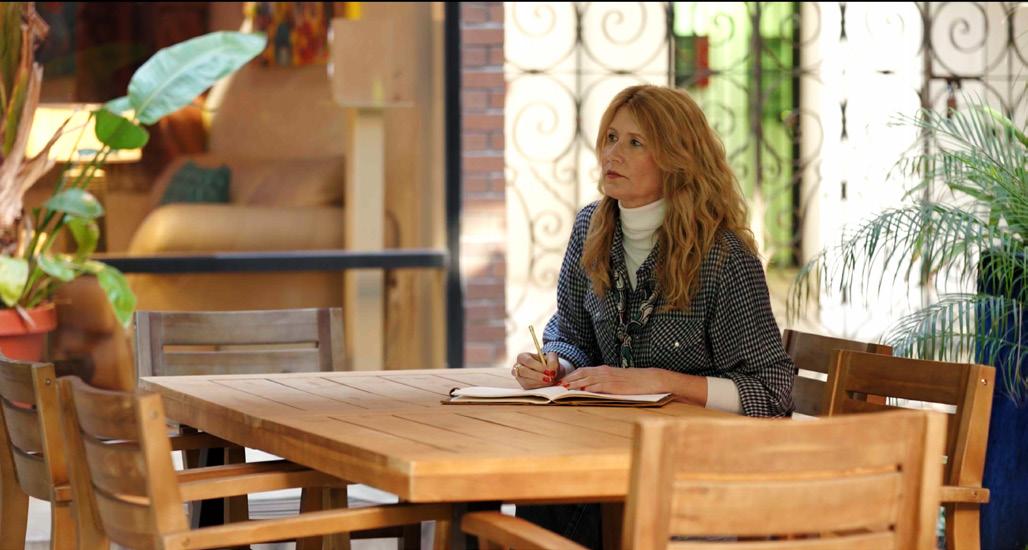
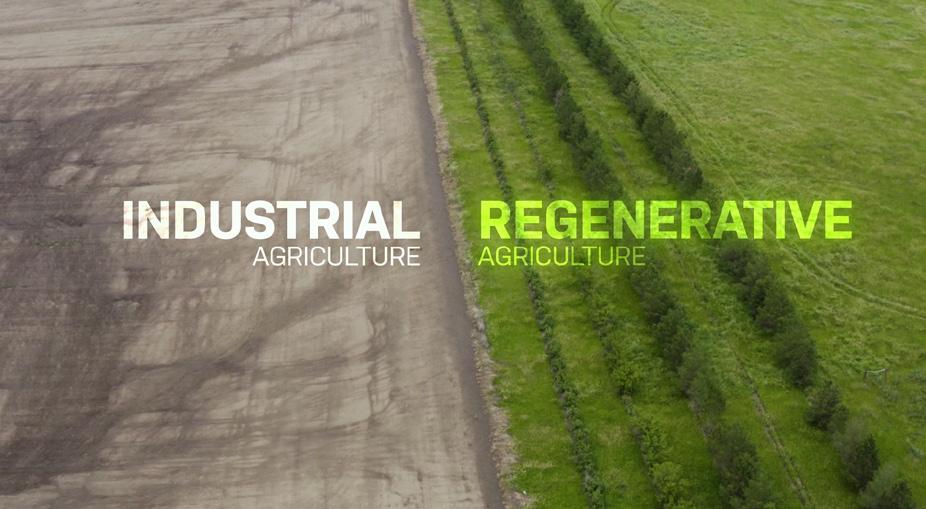



S“Stalk a story,” echoed the invitation from ecophilosopher, cultural ecologist, and guest river guide David Abram, as our group rested on the soft earth, shaded from the brilliant rays glistening on the flowing Green River we had just peacefully paddled and emerged from.
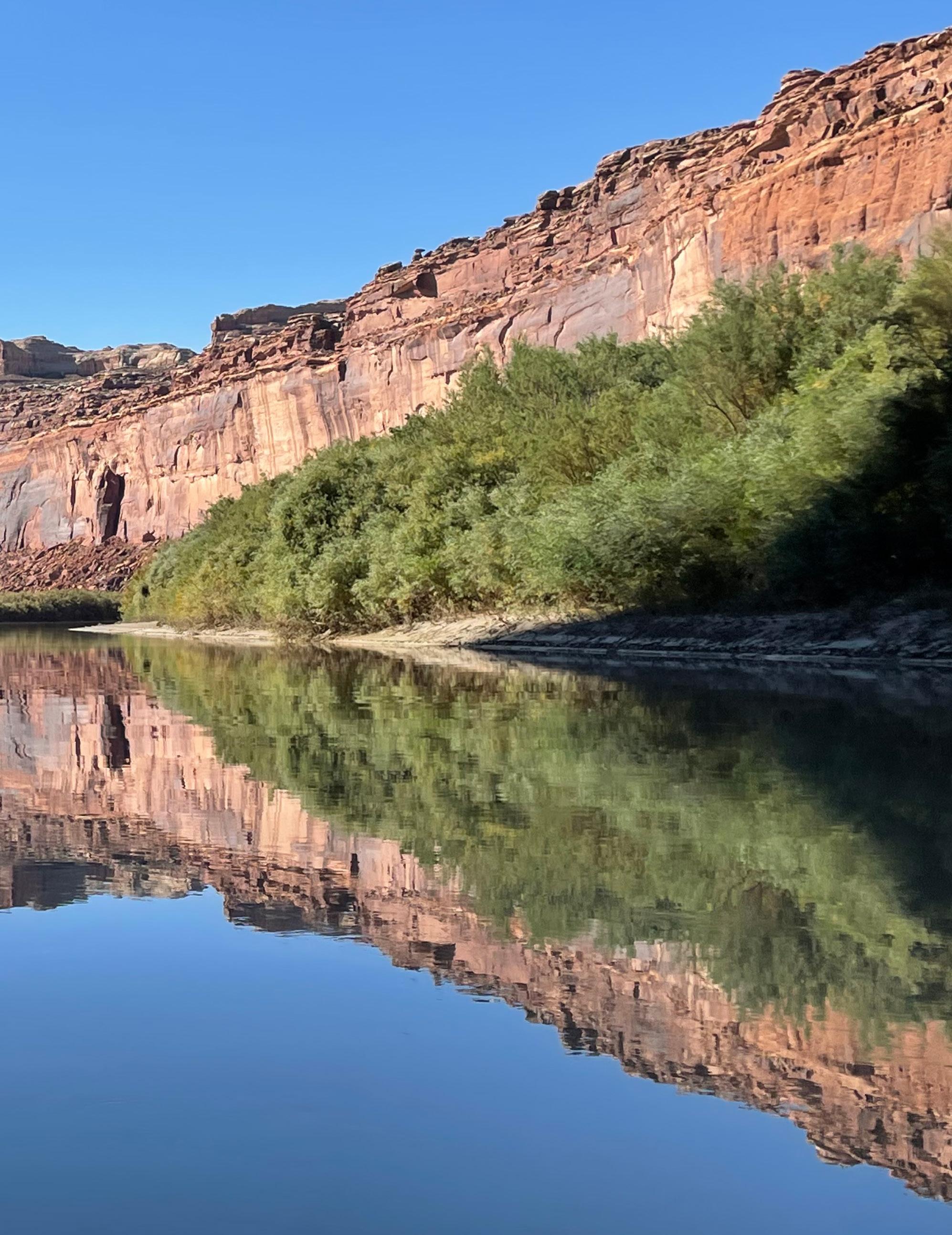
Gazing at the blue skies and storied Labyrinth Canyon walls, whose grandeur secluded our River’s Path group from the distractions and destructions of modern life, I was elated to return to the natural environment where I first encountered sacrednicity, an extraordinary and spiritual embodied experience, illuminating our interconnectedness with the “more than human world.”
Utah’s prodigious Labyrinth Canyon offers unrivaled environmental magnificence, geological wonder, radiant light, magical bird song, and slow river flow, a perfect concoction for nature nourishment and needed pause from our overcharged lives. While all that wonder is enough to satisfy a craving for nature’s cradle, if we are truly open, we can experience something much deeper and more magical, with impact far beyond expectation.
This has been my greatest lesson from paddling the Green River, guided by transformational canoe guide Lauren Bond, the land herself, and the renowned guest guides, like Abram, that Bond invites to be a part of her excursions. From accidental viral poet John Roedel and multi-dimensional naturist and healing artist Sarah West, to Swedish singer Fia, nature writer Craig Childs, and famed musicians Mamuse, Bond’s trips often feature high-caliber guest guides — just one facet of her tours that makes The River’s Path unique. Powerful stories and lessons from these acclaimed thinkers, singers, and doers remain alive in this special canyon, blending with our own stories and those before us, making for an unparalleled amalgam of richness.
choices — like choosing to canoe a river in the desert Southwest during Sukkot (a harvest holiday which I typically celebrate amid colorful autumn leaves) — I am energized by the synergies that present themselves.

They magnify a timeless interrelation of culture, humanity, and ecology that many are too distracted to experience. Although I felt prepared and excited at the journey that lay ahead of me, as I paddled effortlessly and gazed in awe at the otherworldly canyon, I still could have never imagined all that I would experience.
Breathing the canyon’s desert air, I felt worlds away from the familiar smells and sights of autumn in the Northeast, where I grew up. As calendar events no longer necessarily align with earth-based rituals we are accustomed to, whether due to erratic weather patterns from our warming world or our own
That sunny autumn day, I admittedly had lost complete track of the calendar. I had spent the previous days soaking in hot springs, hiking mountains, excitedly packing up for the canoe trip, and living very much in the present moment. Paddling together with a motley crew of participants — some with camping and canoeing experience, some
complete newbies — spanning a wide range of ages, abilities, and life experience from across the country and even Canada, I became further lost in time as I got to know my adventure-mates, and we marveled our heavenly surroundings.
The canoes of our colorful flotilla, loaded up with personal gear, tubs full of delicious meal supplies, and even a “groover” (one of our most important provisions, set up at each night’s campsite for private bathroom time), all caught up with each other.
We floated up to what looked like a dense, seemingly impenetrable wall of green bushes that river guide Lauren Bond claimed would lead to the most perfect camping spot. As we all reclined in our canoes, relishing in the scenery and nibbling our healthy snacks, Lauren did some reconnaissance. To our astonishment, with mud up to her thighs

and a radiant smile on her face, she assured us that this would be our spot for the night, that it would be absolutely incredible, and that no one would get muddy like she did. Baffled, I skeptically accepted her invitation to help clear a path.

Two of the experienced folks used machetes and sickles to cut the bulky branches, and I played the role of passing them down towards the shore to create our path. As I held one tall bundle passed to me from above and readied to pass it down below, it swayed from side to side and made a special whoosh, a sound and feeling uniquely familiar to my body and soul. “This feels like shaking a lulav,” I thought to myself. The feeling was so strong, I said it out loud as well, even though I knew no one on this trip would have any idea what a lulav was. A central ritual object for Sukkot, the earth-based holiday I had now forgotten entirely about, lulavs are composed of willows and two other species of trees — exactly what I was handling.
Fire circle. Photos by Mike ShubicTaking in the stupendous views of the canyon walls, the sounds of the flowing river, the unique nature scents, and this special lulav experience, I remained calm yet felt ecstatic, though I hadn’t yet even realized it was actually Sukkot! Hot and sweaty from laboring, once I realized, I had chills throughout my body. I knew this was not just serendipity or synchronicity but something much more powerful — I coined it “sacrednicity.”
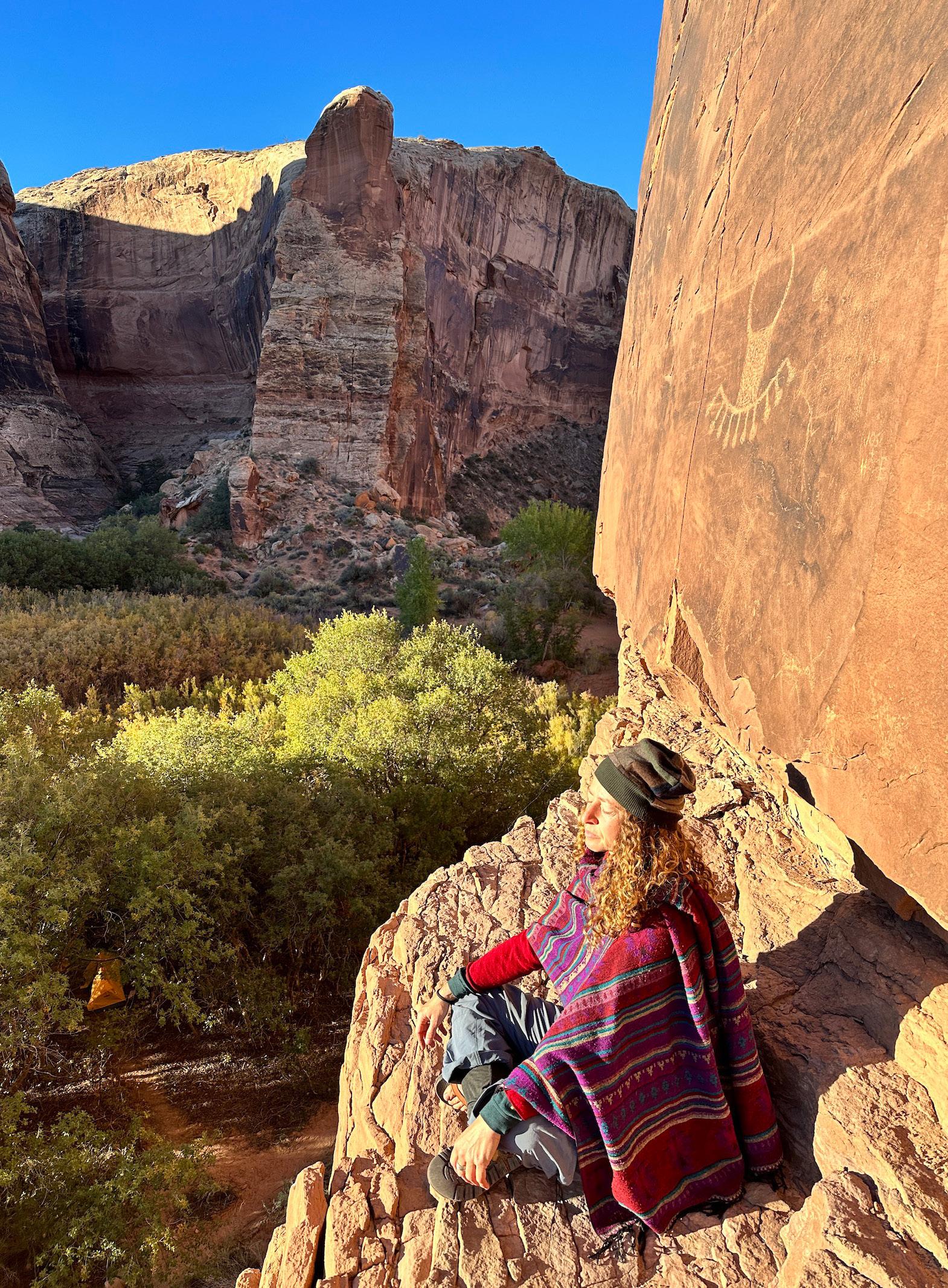
A portal had emerged! From the riverside’s abundant growth, we forged a path to a transcendent campsite. An expansive oasis, the space was rife with fresh water swimming holes, ancient petroglyphs, trees arched like rainbows, thousands year old cryptobiotic soil, sandstone cliffs, cozy spaces for our campfires and song circles, open skies for starbathing, and infinite mesmerizing views..
Willows in my hands, mud encasing my feet, flowing river sounds in my ears, desert air in my breath, and cultural roots coiled inside me, I realized the universe had invited me to something grand, not just to stalk a story, as Abram prompted us, but to be stalked. We were paddling into new understandings of and relationships with our nature-based relatives. My sacrednicity moment began to make sense. It was illuminating the aliveness and active collaboration of seemingly other-worldly beings, with whom we dynamically share story and are entangled ecologically, cultural roots and traumas included.
In his book, The Spell of the Sensuous: Perception and Language in a More-Than-Human World, Abram writes:
“A story must be judged according to whether it makes sense. And 'making sense' must be here understood in its most direct meaning: to make sense is to enliven the senses. A story that makes sense is one that stirs the senses from their slumber, one that opens the eyes and the ears to their real surroundings, tuning the tongue to the actual tastes in the air and sending chills of recognition along the surface of the skin. To make sense is to release the body from the constraints imposed by outworn ways of speaking, and hence to renew and rejuvenate one's felt awareness of the world. It is to make the senses wake up to where they are.”
The River’s Path returns to this same stretch of Green River several times a year to experience the power the land plays in holding, shaping, and transmitting philosophies, stories, and signs of our interconnectedness. This power was palpable throughout our week-long journeys, during refreshing swims, as we spotted blue herons, petrified wood, and giant perfect heart shaped rocks, and as our heart songs echoed off the storied canyon’s walls. It’s nearly impossible to leave the river’s path without a refreshed sensory lens, a catalyst for experiencing sacred energy and interconnection closer to home, as well.
As disconnection and destruction proliferate in our world, regeneration and renewal are critical. The power of accepting invitations with open hearts and minds — whether to “stalk a story,” create pathways that seem impossible, or to join a river trip with poets and philosophers — is what I hope for us all, that we may all experience and share moments of sacrednicity, resulting not only in personal transformations and awakenings but in greater care for each other and our sacred Earth.





IIn the quest for a more sustainable future, terms like “biodegradable,” “compostable,” and “commercially compostable” are becoming increasingly commonplace. However, these labels, while all sounding environmentally friendly, signify different degradation processes and environmental impacts.
Deciphering what each of these terms means can be a key step in making informed decisions about the products we choose to consume and how we manage their end-of-life. In this article, we will delve into the differences between these three categories, highlighting their benefits and drawbacks in our ongoing pursuit of sustainability.
“Biodegradable” is a term that refers to materials that can be broken down over time by natural processes. Specifically, these materials decompose through the
action of living organisms, primarily microorganisms like bacteria and fungi.
It's important to note that while all biodegradable materials will eventually return to nature, the length of time this process takes can vary widely. Some items might degrade within a few weeks, while others could take hundreds of years. This is largely dependent on the environmental conditions, such as temperature and humidity, and the composition of the material itself.
It's also worth mentioning that biodegradation doesn't necessarily prevent environmental damage.
Some biodegradable materials can release harmful substances — such as microplastics or methane gas — into the environment, posing potential threats to wildlife and ecosystems.
Proper disposal of biodegradable packaging and products requires a clear understanding of local waste management systems and guidelines. Biodegradable waste can be best disposed of in industrial composting facilities, where the conditions of heat and humidity are optimal for the decomposition process. In the absence of such facilities, home composting is also an option for items like food scraps and certain types of biodegradable packaging, though this might take a longer time. Additionally, biodegradable products should not be disposed of in recycling bins, as they can contaminate the recycling process.
Compostable materials provide an eco-friendly alternative that merges the benefits of biodegradability with nutrient recycling. These materials decompose in a compost environment, converting into a nutrientrich soil enhancer that can support plant growth. This process is possible due to the action of specific bacteria, fungi, and other composting organisms under certain conditions. Compostable products, therefore, not only disintegrate rapidly but also return
beneficial materials to the environment, effectively closing the loop in the consumption cycle.
While the term “compostable” often brings to mind food and yard waste, a variety of products, including certain types of packaging, are now designed to be compostable. This can significantly reduce the volume of waste heading to the landfill, while also decreasing the manufacturing demand for virgin materials. Decreased manufacturing, in turn, can save water, limit pollution, and decrease the need for fossil fuels. Thus, compostable materials can play a vital role in promoting a more circular economy and sustainable future.
While compostable materials are decidedly an environmentally friendly option, it is worth noting that many compostable products require very specific composting environments to break down fully.
Composting at home is a practical approach to reprocessing compostable materials and contributes to minimizing landfill waste. To start, you would need a compost bin, which could be placed in your backyard or any outdoor space.
Essential components for a successful compost pile include “brown” material such as leaves or branches for carbon, green material like vegetable scraps for

nitrogen, and water. It's crucial to maintain a good balance between green and brown material; typically a ratio of 3:1 is most efficient. Avoid composting meat, dairy, or diseased plants, as these items can attract pests or create unpleasant odors.
Periodically, you should turn the compost pile to assist in aeration and expedite the composting process. Over several weeks to months, the material will decompose into rich, dark humus which can be utilized to enhance the fertility of your garden soil.
Remember, while composting at home can manage a significant amount of compostable waste, not all compostable materials can be composted at home. Some require the higher temperatures of industrial composting facilities to break down effectively, which leads us to our third term, “commercially compostable.”
may not decompose effectively in a backyard compost pile. However, they transform into nutrient-rich compost within a commercial composting facility, contributing to a sustainable closed-loop system where waste is not merely disposed of, but repurposed to enrich the soil.
Despite the promising implications of commercially compostable materials, a key challenge lies in ensuring access to and efficient functioning of commercial composting facilities, as well as effective collection and segregation systems for compostable waste. Consequently, compostable items may end up in landfills where they don't decompose as intended and instead contribute to methane emissions, much like their non-compostable counterparts.
In lieu of compostable materials, several sustainable alternatives exist that are worth exploring. One such option is the use of recyclable materials. These items can be transformed into new products through industrial processes, helping reduce the demand for virgin resources and decrease waste generation. However, effective recycling requires robust waste segregation, collection, and processing systems so there are better alternatives.

“Commercially compostable” refers to materials that can break down into natural, non-toxic components but require the specific conditions found in industrial or commercial composting facilities to do so. These facilities maintain the ideal balance of heat, moisture, and aeration, achieving higher temperatures than home composting systems, thus supporting the breakdown of more complex compostable materials.
Commercially compostable products include certain types of food packaging, serviceware, and bags, which
Reusable items present another viable solution. By creating products designed for longevity and multiple uses, the overall consumption of resources can be significantly reduced. As a society, we've already moved in that direction. For instance, using reusable shopping bags or water bottles has become mainstream and will have a substantial positive impact on waste reduction over time.
Ultimately, a shift towards a zero-waste lifestyle, where waste generation is minimized through mindful consumption and re-use, offers an overarching solution. This way of life involves choosing products with minimal packaging, repurposing items, and composting food waste at home. While transitioning to a zero-waste lifestyle might seem daunting, each small step contributes to a larger collective impact.


Grades 8-12 • admissions@ormeschool.org www.ormeschool.org
Orme is more than a preparatory school. It is a community dedicated to each student. Immerse yourself in the natural beauty of Northern Arizona – as distinct and magnetic as our academic program.




IIn the heart of Phoenix, a local butcher shop is quietly making waves in the community by redefining the way we approach meat consumption. Arcadia Meat Market, owned by Nick Addante — a Phoenix native with a passion for healthy, grass fed, pasture raised, organic proteins — isn’t just your average meat shop. It’s a testament to sustainability, ethics, and a deep-rooted connection to the land.
Arcadia Meat Market takes pride in providing high-quality, locally sourced meat while ensuring the welfare of animals and promoting sustainable practices. Addante partners with over 40 ethical ranchers that range from Rancho Llano Seco farm in Chico, California and Emigh Lamb in Sacramento, to a variety of ranchers right here in Arizona. Addante and his business partner, rancher/cattleman Tim Peterson, own Arizona Grass Fed Beef, a 100% grassfed and 100% grass-finished beef company. Addante carefully selects suppliers that prioritize animal welfare, sustainable land management, and hormone and antibiotic-free diets.
Addante shared insights into the company’s commitment to sustainability and ethical sourcing. “We believe that healthy animals raised in open pastures make for a healthier planet and happy customers,” he stated. “Our cattle feed on nature’s bounty, without the need for a feedlot. The natural grasses and legumes of Arizona rangeland provide the most flavorful beef I’ve ever had.”
But Arcadia Meat Market's dedication to sustainability extends beyond meat. They also support local farmers and producers committed to ethical and sustainable practices. By sourcing produce from Arizona Microgreens and Steadfast Farm, eggs from Lucky B Acres, honey from Twisted Bee Farms, and milk from Golden Rule Dairy, Arcadia Meat Market promotes a holistic approach to sustainable agriculture.
Arcadia Meat Market's commitment to sustainability also includes innovative products like their Beef Jerky and Pasture Pup dog treats. The dehydrated dog treats
are made from a blend of beef, organs, and lungs, providing pets with a nutritious snack sourced from local ingredients.
What sets Arcadia Meat Market apart is its wholeanimal approach to butchery. Hand-cutting and utilizing every part of the animal minimizes waste and maximizes value.
“We believe in nose-to-tail butchery because it allows us to honor the animal and minimize waste,” Addante explained. “It’s important to us that we do so with our footprints in mind, and each of our products are small, giving them the opportunity for proper animal husbandry and conscientious practices.”
This practice amounts to a vast selection inside Arcadia Meat Market, which houses over 30 cuts of beef, 22 varieties of pork, 18 cuts of chicken, and 18 cuts of lamb.
In addition to its sustainable practices, Arcadia Meat Market also gives back to the community through its charity program. The “Give the Gift of Food to Feed a Family” initiative allows customers to donate one pound of Arizona Grass Fed ground beef for just $5 to support food-insecure families.
For the residents of Phoenix, Arcadia Meat Market isn’t just a place to buy meat – it’s a symbol of a community coming together to support ethical practices, sustainable agriculture, and the well-being of people, animals and the planet. By choosing to support businesses like Arcadia Meat Market, consumers can play a vital role in promoting a healthier, more sustainable future for generations to come.
Basic Vinaigrette Ingredients
1/2 cup extra virgin olive oil
3 tablespoons vinegar of choice
1 tablespoon Dijon mustard
1 tablespoon honey
½ medium clove of garlic, pressed or minced
¼ teaspoon salt, to taste
2 tablespoons lemon juice
½ teaspoon oregano
Freshly ground black pepper, to taste
Vinaigrette Directions:
Combine all ingredients except oil in a small bowl and whisk or blend. Slowly incorporate the oil into the mixture while blending to allow it to emulsify.
Salad Ingredients
One full bowl of organic baby gem mixed greens
1 1/2 to 2 ounces of each of the following:
Salami
Capicola
Provolone
Pepperoncinis
Olives
Tomatoes
Pickled red onions
Roasted Peppers
Croutons
Assembly:
In a large bowl, add mixed greens, salami, capicola, provolone, pepperoncinis, olives, tomatoes, pickled red onions, roasted peppers, and croutons. Top with vinaigrette and freshly ground pepper, toss and serve.


SERVES 3 TO 4
Ingredients
8 oz. maitake mushrooms
8 oz. trumpet mushrooms
4 oz. lions mane mushrooms
Rendered beef fat
Salt and pepper, to taste
Gremolata
Sherry jus
Crispy garlic
Directions
Preheat oven to 450 degrees. Cut all mushrooms into large, bite size pieces and toss with rendered beef fat. Season to taste with salt and pepper. Spread mushrooms evenly on a sheet tray and roast for 12 minutes until golden brown and mushrooms are tender. In a bowl, toss mushrooms with sherry jus and top with gremolata and crispy garlic.
Sherry Jus
4 medium shallots, peeled and sliced
1 ½ cups dry sack sherry
1 bay leaf
8 sprigs thyme
2 quarts chicken stock
Directions for Sherry Just
Cook shallots over medium heat until golden brown. Deglaze with sherry, scraping up the brown bits in the bottom of the pan. Add bay leaf and thyme and reduce until nearly dry. Add chicken stock and reduce by 3/4.
Strain and season to taste.
Gremolata
1 bunch of parsley, rinsed and chopped
1 tablespoon of horseradish root, grated
Zest of 1 lemon
Directions for Gremolata
Mix ingredients together in a bowl.

KKnown as Hub City (the economic, education, and healthcare center of the South Plains), Lubbock, Texas, is a lively city blending Western heritage, a supportive arts scene (and one of the first cultural arts districts recognized by the state of Texas), award-winning winemaking, exquisite restaurants, and plenty of cultural attractions. Lubbock also is home to Texas Tech University and its gorgeous collection of public art. Here’s how to make the most of a trip to this friendly west Texas city that’s simply bursting with charm. www.visitlubbock.org
Located on Broadway Street in the heart of downtown Lubbock, the Cotton Court Hotel is a 165-room pet-friendly boutique hotel flaunting eclectic design elements. From the cozy lobby with its roaring fireplace, Buddy Holly mural, and wall of guitars, to the stylish guest rooms and suites with SMEG refrigerators and oversized bathrooms with rainfall showers, this hotel has it all. That’s not to mention The Midnight Shift restaurant and
bar, and the sprawling courtyard with multiple fire pits and outdoor pool. The Cotton Court Hotel also has impressive accessibility features, such as six ADA rooms (including two that are roll-in shower accessible) and 15 hearing-impaired rooms (with doorbells that have flashing lights). The hotel also features wheelchair accessibility throughout the property, brail on all hotel signage, and a pool lift. 1610 Broadway St., 210.220.3054, www.cottoncourthotel.com
Lubbock is home to a community of farmers, ranchers, and chefs who are involved with the farmto-fork movement. Local farmers markets include the Lubbock Downtown Farmers Market (featuring nearly 70 vendors) and Wolf Creek Farm and Neighborhood Market (focusing on locally grown produce using only non-GMO, organic, heirloom seeds and plants). Find everything from baked goods, salsas, and fresh produce to live plants, eggs, meat, and dairy items. 1822 Buddy Holly Ave., www.lubbockdowntownfarmersmarket.com; 5301 County Road 1260, www.facebook.com/wcfarmstx
For breakfast, try Cast Iron Grill, which is known for its down-home menu. Order the chicken-fried steak and eggs or the cast iron burrito, and follow it up with a slice of Billionaire (strawberry) pie for good measure. 620 19th St., 806.771.7690, www.castirongrilllubbock.com

Another great breakfast option is Monomyth Coffee Co. Grab a latte (with your choice of house made syrups) and some avocado toast, a greens and grains bowl, or a Brulee Bakery pastry. 2024 Broadway St., 806.368.8183, www.monomythcoffee.com
For lunch, try Evie Mae’s for some of the best barbecue in town. In fact, the line can get pretty long,
so be sure to arrive early. Menu options include meat by the pound (such as brisket, pulled pork, chicken, and pork ribs), sandwiches, combo plates, and a bevy of sides. 11302 Slide Road, www.eviemaesbbq.com
The Fresh American is a new restaurant that features an energetic open kitchen, a special chef’s table experience, an outdoor patio, two private dining rooms, and a menu of modern American cuisine. Lunch options include a goat cheese and beet salad, West Coast fish tacos, smoked brisket French dip, and The Fresh American burger. The dinner menu includes bourbon sticky ribs, pan-seared crab cakes, an array of steaks, lamb confit, and a double bone-in pork chop. 3715 114th St., 806.438.1322, www.thefreshamerican.com

Many of Lubbock’s restaurants offer seasonal and farm-to-table cuisine, but The Nicolett uses unique ingredients — like juniper and cactus flower — grown on-property. This new fine-dining restaurant focuses on High Plains cuisine, showcasing ingredients that are natural to the region. It was named one of the 50 Best New Restaurants in America by Bon Appetit in 2022, and Chef Finn Walter was named as a semifinalist for Best Chef: Texas by the James Beard Foundation. Cocktails here also feature regional twists, such as the Desert Margarita made with Desert Door Texas Sotol, Ancho Reyes, Combier, habanero bitters, lime, and sotol salt. 511 Broadway St., 806.993.0144, www.nicolettrestaurant.com
Another great spot for dinner, The West Table offers upscale dining, combining eclectic New American cuisine with local and global ingredients, all with
The Nicolett. Photo courtesy of The Nicoletta focus on seasonality and sustainability. While menus change daily, options have included NOLA shrimp, oysters on the half shell, roasted beet salad, charbroiled beef tenderloin, and cast iron-seared duck breast. As an added bonus, the restaurant implements a number of zero-waste measures. 1204 Broadway Ave., 806.993.9378, www.thewesttable.com

Recently opened last summer, Neighborhood F&B is restaurateur Cameron West’s answer to an approachable yet modern neighborhood bar and grill. Enjoy elevated seasonal fare, craft cocktails, local beers, and a diverse selection of wine, plus a menu of pub fare like deep-fried deviled eggs; a burger with bacon jam, caramelized onions, American cheese, and toasted brioche; and even fried lasagna. 9806 Quaker Ave., 806.553.9500
A hidden gem in the heart of Lubbock’s Depot District, La Diosa Cellars is a charming bistro with plush chairs, warm lighting, and music that fits the moody ambiance. Enjoy classic Spanish and Mediterranean tapas, salads, pizza, and specialty dishes; gourmet desserts; and an eclectic wine list, featuring both local wines by the glass or bottle, as well as an assortment of domestic and international wines. 901 17th St., 806.744.3600, www.ladiosacellars.com
Founded in 1976 by Dr. Clinton “Doc” McPherson — a pioneer of the modern Texas wine industry — and Bob Reed, Llano Estacado Winery was one of the first post-Prohibition wineries in Texas. McPherson, who planted experimental vines in the area in the 1960s, laid the framework for what has since shaped winemaking in the Texas High Plains landscape. Over the years, Llano Estacado has grown to become the
largest, best-selling premium winery in Texas. 3426 E. FM 1585, 806.745.2258, www.llanowine.com
Created in 2000 to honor the legacy of winemaker Kim McPherson’s father, Dr. Clinton “Doc” McPherson, McPherson Cellars focuses on sustainably-farmed small-batch wines. By planting and growing grapes that are best suited for the area’s climate and soil and using improved farming methods, McPherson Cellars crafts wines that beautifully showcase the terroir. 1615 Texas Ave., 806.687.9463, www.mcphersoncellars.com
For those who want a local craft beer, look no further than Good Line Beer Co. Owners Chris Troutman and Shawn Phillips are known for their “Dust Coast” style of beer brewed specifically for the area, and the family- and pet-friendly taproom and patio offer a perfect spot for enjoying brews like the Range Life pilsner and the Bitter Buffalo IPA. 2611 Boston Ave., 806.701.1971, www.goodlinebeer.com
The National Ranching Heritage Center features 55 historic structures that tell the story of frontier settlers. These structures have been relocated, restored and furnished to match the period and chronologically arranged to show the evolution of ranch life from the late 1700s through the mid-1900s. In addition to the 19-acre historical park, the NRHC features a 44,000-square-foot museum and 42 life-size bronze outdoor art pieces. The NRHC seeks to raise awareness surrounding sustainable land management and also grows grasses onsite that are native to the Texas High Plains. Meanwhile, the newly opened Cash Family Ranch Life Learning Center serves as a comprehensive educational experience. 3121 4th St., 806.742.0498, www.ranchingheritage.org

Lubbock also is the birthplace of Buddy Holly, and there are many tributes to the influential singer/ songwriter throughout the city. For example, the Buddy Holly Center preserves and presents artifacts relevant to Holly, as well as those of other West Texas performing artists and musicians. Items especially of note include Holly’s iconic glasses and his prized motorcycle. 1801 Crickets Ave., 806.775.3560, ci.lubbock.tx.us/departments/buddy-holly-center

The Buddy Holly Hall of Performing Arts and Sciences is a state-of-the-art 2,200-seat center presenting shows, concerts and special events. It’s also home to Ballet Lubbock Pre-Professional Academy. Upcoming events include Killer Queen: A Tribute to Queen, Ballet Lubbock Presents: The Four Seasons, The Book of Mormon, and The Nitty Gritty Dirt Band. 1300 Mac Davis Lane, 806.792.8339, www.buddyhollyhall.com
Overseen by Director Chad Plunket, a local celebrity in his own right, the Charles Adams Studio Project is a non-profit arts organization that serves as a cornerstone in the Lubbock Arts District. CASP features live/work studios housing three fulltime artist residencies and one artist-in-residence participant; the Studios @ 5&J (housing the Helen DeVitt Jones Print Studio, The Texas Tech University School of Art: Satellite Gallery, 5&J Gallery and The CH Foundation Metals Studio & Foundry); professional-grade studio space for working artists; The Charles Adams Gallery (representing regional artists); and the Director’s Residence and courtyard (both of which are available to rent). 602 Avenue J, 806.928.4529, www.casp-arts.org
We are looking for experienced newspaper, magazine, and digital media Advertising Sales Representatives. We are seeking candidates who have demonstrated skills in the following areas:
• Direct, in-person, B2B sales, especially in the advertising field
• The ideal candidate will have two to five years of sales experience
• The Ad Rep will report directly to the Publisher Responsibilities include the following: direct, inperson B2B sales of advertising for print, website, and e-Marketing formats in addition to sponsorships for eco events and summit events, through a relationship-based approach, being articulate and professional in both communication and appearance.
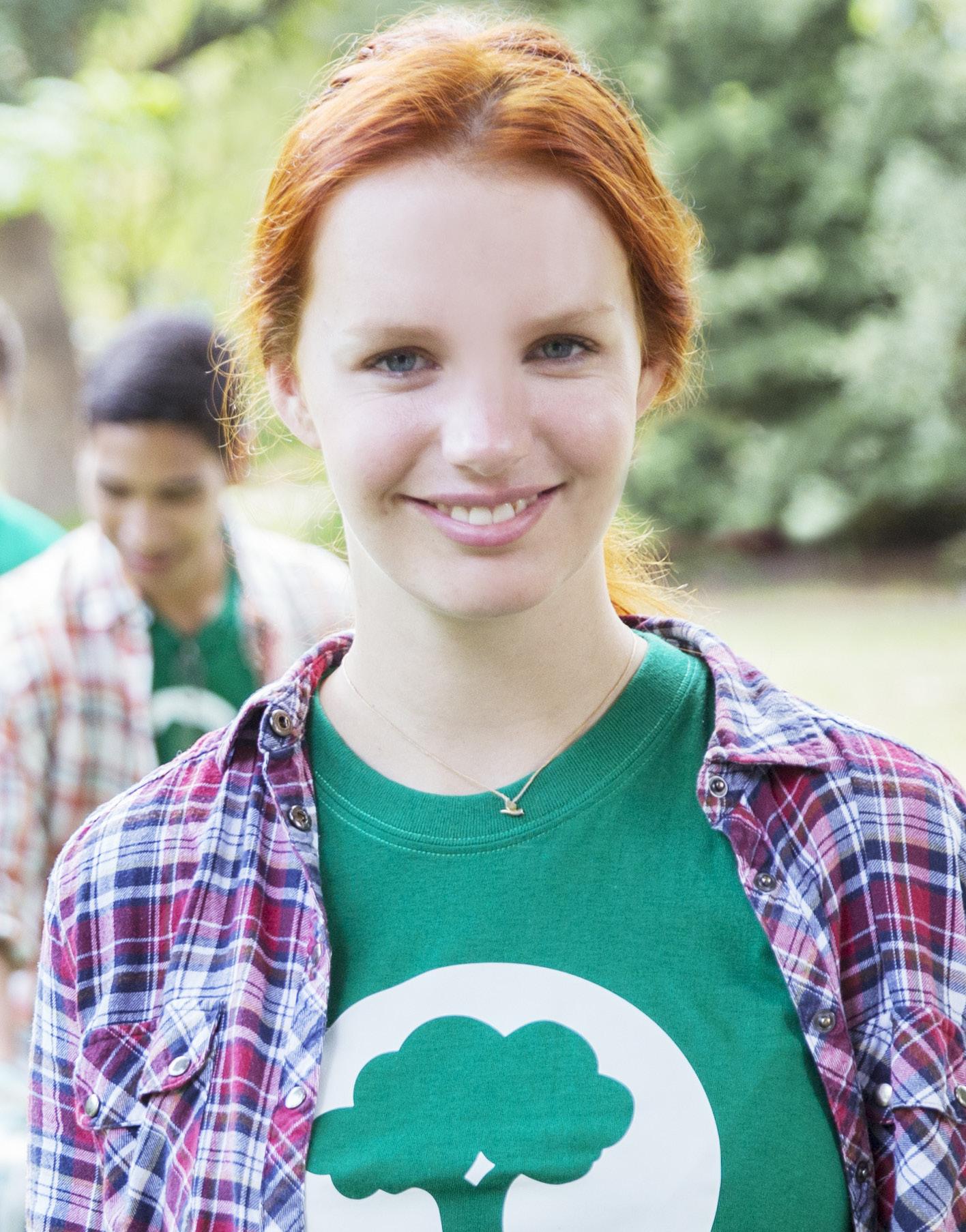
A Sedona school has partnered with a local developer and the city to lift an eco-friendly tiny home onto its campus while raising awareness of a teacher-housing issue at one of the most beautiful places on Earth.
Arizona residents and tourists have made Sedona a must-visit destination nearly equal to the draw of the Grand Canyon. With its iron-infused red sandstone monuments and spiritual vortexes, the Red Rocks, and adjacent Oak Creek Canyon, Sedona is a destination that many dream about making home. For Sedona teachers, it may always only be a dream. Sedona, along with many resort communities, poses a challenge of affordability for its teachers and other workers and poses a need for them to commute into the town for work.
To address this challenge, the Sedona Charter School has innovatively offered on-grounds housing for two of its teachers, most recently Haley Seiber, a teacher who moved to Arizona from Florida five years ago.
Six years ago, the school and its benefactors lifted a 152-squarefoot tiny house with a loft and front deck onto the property in an effort to accommodate at least one teacher’s housing needs. The log-cabin-style home matches the character of the 1922 Bennett-Purtymun log cabin on the property, Sedona’s oldest, which the school uses for environmental education.
Founded in 1995, Sedona Charter School is Arizona’s oldest charter school, serving the needs of a broad-based demographic of roughly 140
students. In 2001, the Montessori-anchored school moved to its four-acre West Sedona campus. Seiber, with a bachelor’s degree from St. Petersburg College, welcomed the opportunity to teach where the school’s values aligned with her own. And, living and working in one of the world’s most beautiful places, she could easily enjoy her passions of hiking and connecting with nature.

“The provision of housing was a significant factor in her decision to accept the position and has contributed to her retention for four to five years in the area,” says urban planner and developer Darin Dinsmore of Seiber. Dinsmore is the founder and principal of Sedona-based TinyCamp, which made the home available for the school.
His company offers luxury, eco-friendly tiny home vacation retreats in Oak Creek Canyon and nearby Cottonwood, where individuals and couples re-center in quiet, inspiring locations, to further wellness, spirituality, sustainability, and connectedness to the natural world. TinyCamp Sedona and TinyCamp Cottonwood were recently certified under the Friends of the Verde River’s River Friendly Living program, highlighting a commitment to sustainability and environmental stewardship.
Citing Zillow, Dinsmore explains that the median price of a single home in Sedona is $918,780.
“Such financial barriers make it difficult for teachers, local employees, and government workers to afford living in Sedona,” he says. “This home is part of a mission to construct a sustainable, long-term housing solution aimed at attracting and retaining teachers in Sedona.”
John Griffin, a retired builder living in Sedona and member of the school’s board of directors, adds that the school project is part of an ongoing community effort to build more affordable housing in the area.
A number of years ago, he led a group in building a performing arts center/ classroom at the school.
The recent surge of highpriced short- and long-term rental sites, such as Airbnb, has intensified this housing problem.
“The quality of the education of our youth is vital,” Griffin says. “When teachers can’t even afford to live in the town where they’re teaching — that’s not ideal.”
Another teacher occupied the tiny house first, but she returned to Phoenix to tend to family, and the school offered its use to Seiber.
Seiber recalls, “It definitely solidified my decision to move and to work at the school because I don’t know how I would have done it any other way.”
He connected with the group and began a mentoring program with the students to provide feedback on designs and ensure that the tiny homes meet local building codes and are able to be approved by local jurisdictions. Dinsmore purchased five of these student-built houses and shipped them to Sedona. One of these became a demonstration unit for tiny house living in picturesque Oak Creek Canyon just north of Sedona. Dinsmore’s company was one of the first participants in Coconino County’s sustainable building program, which helped facilitate innovative solutions in sustainable housing, including its first tiny house ordinance.

The tiny home at Sedona Charter School traveled a long way to its current home.
About five years ago, Dinsmore met the mayor of San Antonio at the World Changing Conference in Montreal. She told him about working with the Construction Careers Academy to further sustainable development practices in the city through the fabrication of tiny homes.
Soon after, Dinsmore’s realtor — a Sedona Charter School board member — showed interest in the project and informed the school’s principal at the time, Alice Madar. The small public school could not afford to pay high salaries for teachers, and after Arizona forbade restrictions on short-term rentals in the mid-1970s, property owners were rapidly converting homes to rentals, making it difficult for families and school staff to find homes, Madar recalls.
When the tiny house project began on Sedona Charter School’s campus, one teacher was already
living on campus in a small cabin.
Madar notes, “She indicated that if she had to try to find market-rate housing off campus, she would have had to leave the school. We wanted to hire some younger teachers but we could not pay top salary, and interested candidates could not find affordable housing. We joked about throwing up a tiny house over the summer and hiring a teacher who could live there.”
before the fall semester — a process that might have taken several years otherwise.
“This is a critical time when there is absolutely no housing available in the area, so the teacher would have probably had to have commuted from Rimrock [a town about 20 miles south of Sedona] to be able to afford to live in the area,” he says.
The city showed class, too, recognizing the teacherhousing problem in general and helping to facilitate short-term solutions and envisioning long-term ones. Steve Mertes, the city’s director of community development, was the chief building official when the tiny house was installed at the school. Together with Madar, he worked to obtain the necessary permits.
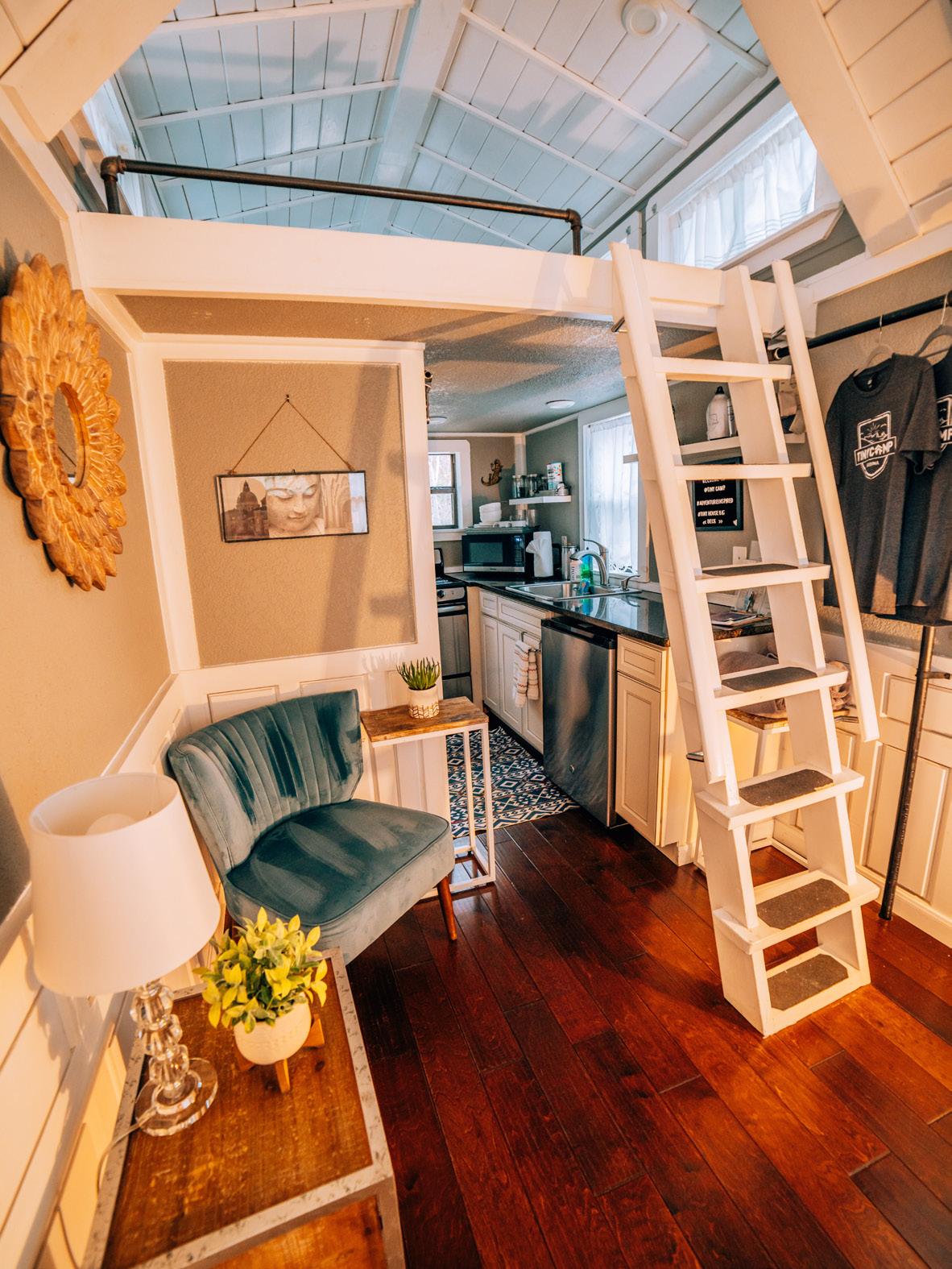
She connected with Dinsmore and found that he not only had one available, but could help the school work through the regulatory and entitlement process, amend its housing codes, and use the tiny house as a demonstration project for sustainable housing.
Dinsmore brought in his team of contractors to expedite the project, including the foundation and fire-sprinkler system. He postponed incomeproducing opportunities to help the school facilitate a fast-track solution, so a new teacher could move in
San Antonio’s plumbing, electrical, and mechanical inspectors had already approved the home, and Mertes was able to use a provision in the Sedona Building Code which permits the relocation of a building approved by another jurisdiction.
In addition, to meet IRC requirements, the city worked with Dinsmore to put the house on an approved foundation and provide permanent utility hookups.
“This critical support came at a time when housing availability in Sedona was scarce, demonstrating the city’s commitment to innovative housing solutions,” Madar said. “This initiative has notably improved teacher retention and enhanced the quality of teaching and extracurricular activities.”
A first for the city, this is also the smallest home ever approved for the municipality. Still, the tiny house filled a specific need in this instance and would serve as a major player in building affordable workforce housing, Dinsmore says.
“We need greater density to make a bigger impact. But every little bit helps.”
The recent hiring of a housing coordinator by the city of Sedona signifies ongoing efforts to address housing challenges, Dinsmore says, adding, “We need a wide range of housing types, including apartments, fourplexes, townhomes, and tiny homes. These can be a part of the solution for higher density, what we call in the business ‘gentle density,’ more walkable communities. This may work in a place such as Sedona that is sensitive to overdevelopment.”
In addition to solving an employee-housing issue at the school, as mentioned, the tiny house is a model for eco-friendly living and educational opportunities in sustainable practices, Dinsmore explains. Among its sustainable elements:
• Material Use Efficiency — The tiny house requires less construction material per capita compared with conventional homes.
• Energy Consumption — The tiny house aligns with sustainability goals by reducing the demand on energy resources and potentially incorporating renewable energy sources for self-sufficiency.

• Reduced Carbon Footprint — The home contributes to lower greenhouse gas emissions and supports global efforts to combat climate change.
• Land Use Efficiency — The house demonstrates an efficient use of space, which can contribute to preserving natural habitats and reducing urban sprawl.
• Dark Sky Community Participation — The tiny home does not add light pollution to the area.
• Lifestyle and Sustainability — This lifestyle prioritizes sustainability, minimalism, and a reduced ecological footprint.
• Zero Commute for Its Resident — Living on campus eliminates the need for daily commuting, significantly reducing the teacher’s carbon footprint associated with travel. This contributes to lower greenhouse gas emissions and decreased air pollution.
Four years in the tiny house have been comfortable, scenic, educational, and convenient.
“It was a great way for me to get to know the area and be centrally located next to work,” Seiber says. “The location has a wonderful view of Thunder Mountain from the kitchen and loft area, and proximity to hiking trails is great too,” she adds.
What’s more, she’s learning from the home: “Living in the tiny house has made me more conscious of only buying things that are essential or that I really need. Because of the small space, I really have to be aware of what I’m buying and what I need to get rid of.”
At first, she thought tiny house living would be difficult, but she notes, “It’s actually pretty easy once you really settle into the idea.” She’s experienced just one downside: entertaining large groups. “I have had a couple friends come and visit, and we utilize the outside porch a lot.”

WHY SOLAR?
Switching to solar power brings a multitude of benefits for homeowners:
Up to 50% lower energy bills
Go solar and pay $O out of pocket
Increased home value
Clean, renewable energy beneficial to the environment
WHY POWUR?
With more than 11,000 successful solar installations and competitive pricing, Powur is the trusted choice for homeowners across the country Powur's platform model and expert guidance gives you exactly what you need
Equipment options from multiple manufacturers means you get a custom solution
Local installation and labor partners means we understand the needs of your community
Multiple financing options means you get
for the price that works for you
Industry-leading 30-year warranty means you get peace of mind
What are you waiting for?

With Earth Day coming up, you might be looking for ways to “green” your lifestyle. If this is the beginning of your journey, even small changes can make an impact, so don't worry if you’re taking baby steps! If you've been on the path for a while, maybe you'd like some fun new ideas. We tried a new activity that will get you outdoors, spending time with family and friends while getting to know your local town or city — and all you need is a cell phone. Ready for a scavenger hunt?
She Said: There are many app-based scavenger hunts out there that intend to get you off the couch, get some exercise, and have fun out in the community. We saw versions that involved detective “whodunnits,” competitive puzzle races, surviving a zombie apocalypse (really!), or just getting to know your city. We picked a silly, competitive puzzle version (it matches our personalities) and headed to our little downtown with the family. The app could have had more clear instructions, so it was a rough start, but once we figured out what to do, we were off and running. Each “mission” had a riddle to solve, which led us to various places around the city like a library, a candy store, a mailbox, or a fountain. Then we had to upload a photo of us with the solution to the riddle — and here's the “silly” part — acting out the ridiculous action listed in the mission. Did we feel like dorks, pretending to be a mime stuck in a box, juggling imaginary bowling pins, or singing in a rock band of one? You betcha! I just tried to avoid eye contact with any passersby. We laughed a lot though, despite the embarrassment, and spent a lot of quality time together. After about an hour of goofing off, my family was nearly done. I wanted to complete all the missions within the suggested time of two hours though, and looked to see how many were left. Glad I did, and I promptly said, “Yep, we can be done whenever!” There were 60 missions! Whaaat? The only way to complete 60 in two hours is with a LOT of Red Bull or a time machine. We kept going a little longer and then celebrated our accomplishment of 30 completed missions and 15th place by shopping for treats at our local candy store. I really enjoyed discovering local businesses we hadn't noticed before, but most of all, had quality fun time with my family.



HeHe Said: You should have seen the eye rolls and groans when we told our boys that we were going to go downtown for a “wacky walk.” No, we didn't walk around like Monty Python's Ministry of Silly Walks. Wacky Walks are basically a competitive scavenger hunt style game, where you publicly humiliate yourself to win control of the game so that you can also publicly humiliate your friends or family. We followed clues on the app to find different landmarks. Once found, we were prompted to film or photograph ourselves performing different tasks, like moon-walking and engaging in invisible tug of war. We went wacky walking with warm white walkie talkies while window shopping (sentence with 10 ‘w’ words challenge completed). This was a cheap and easy way to get outside and get moving. We had lots of laughs and walked about a mile while doing it, and probably made a bunch of random people laugh by acting like complete fools in a heavily populated place.





Each year, April 22 commemorates Earth Day, signifying the modern environmental movement. Each year, events are held at tens of thousands of locations, including schools, universities, and community sites across the United States, where an estimated 20 million people gather to demonstrate and advocate for environmental protection.
Here are some events on and around Earth Day in Arizona:
CENTRAL ARIZONA
April 20
Earth Day Clean Up - Phoenix
Celebrate Earth Day 2024 by participating in a group trash pick-up day with multiple meetups. Change starts with action, especially one that affects the world around you. This Earth Day, you can make a difference. Bring gloves, trash bags, water and snacks, a hat, and sunblock and wear proper clothing and shoes for picking up trash. From 9 a.m. - noon at Encanto Park, 2605 N. 15th Avenue in Phoenix.

April 20
Celebrate Earth Day!
Free Compost Workshop - Tempe
Learn about the wonderful world of composting and get your hands dirty in the garden at a free compost workshop at the Escalante Community Garden, where experts will guide you through the art of composting. Learn how to turn kitchen scraps and yard waste into nutrient-rich soil for your garden. Bring gardening gloves and put your new knowledge to work by maintaining and improving the community garden's compost pile. Attendees will have a chance to win a special raffle prize at the end of the session. This event is a fantastic opportunity to connect with fellow gardening enthusiasts, make a positive impact on our community, and go home with some new skills. Escalante Community Garden, 2150 E. Orange Street in Tempe.
CENTRAL ARIZONA
April 20
Drive Electric Earth Month
Phoenix Ride and Drive
Head out to the North Phoenix Baptist Church on Saturday, April 20 from 8 a.m. to 12 p.m to explore the world of electric vehicles. Sit, ride in, and even drive an electric vehicle to learn about the benefits for owners and our planet. 5757 North Central Avenue in Phoenix.
Save the Date: Earth Day Cleanup by Natural Restorations - Gilbert Natural Restorations’ mission is to remove trash and graffiti from outdoor recreation and wilderness areas, revitalize natural areas through replanting projects, and enrich the lives of military veterans and other community members. Natural Restoration hosts volunteer cleanup events throughout the year for community members, including youth volunteers, and a Dedicated Restoration Team with contracted military veterans who conduct restorations beyond the reach of most volunteers. 9 a.m. - noon.

On Earth Day, April 22, 25% of sales will support Let's Go Compost! Let's Go Compost is a 501(c)(3) non-profit organization dedicated to making composting free and accessible throughout the United States. The mission is to revolutionize waste management, reduce landfill waste, and combat harmful greenhouse gas emissions. 11 a.m. - 11 p.m., 7051 East 5th Avenue in Scottsdale. Free to attend.
Join in on the celebration of Earth Day on April 22 with an event that includes upcycling, recycling, crafts, music, and fun in the Prescott Valley Town Center. Make environmentally friendly crafts, bring the kids and pick out a plant to take home! Bring any gently used women’s clothing to donate to women in need. 10 a.m. - 4 p.m.
The City of Flagstaff Sustainability Office invites all members of the community to celebrate Earth Day on April 22. The goal is to provide an opportunity for local organizations to show community members ways they can get involved with protecting, conserving, and learning about our shared home. This event is held in a public space where dozens of community organizations, bands, local food vendors, and local presenters come together to have fun in the sun!
Amid Sedona’s famed Red Rock escarpments, from 10 a.m.2 p.m., enjoy the live reptile and raptor presentations, as well as plenty of other games, booths, nature hikes, and outdoor beauty! Free door prize bags for the first 50 visitors. Couples, families, and other groups are limited to one bag.

The Quail Amphitheater invites guests at 2 p.m. to create a seed ball with native wildflowers. At home, plant the seed ball and nature will decide when it's best for the ball to disintegrate and the seeds to germinate and grow. Help our pollinators and local ecosystem by planting these native plants. No additional cost to participate; park entry fee still applies.
A FREE Community Event that’s all about our Planet Earth! Discover all the ways to help make your world healthier and greener. A Community Sing gives anyone who likes to sing, or would like to, an opportunity to do that in a group setting without the pressure of having to stand out. Attendance costs nothing, and people of all ages are welcome. The event is designed to provide an opportunity to raise one's voice with others whom you may not yet know in an informal, friendly, forgiving environment. In the process, the participants build “community” as more than an aspirational reality. Presented by Innovations in Healthy Aging at University of Arizona. Little Chapel of All Nations, 1052 North Highland Avenue in Tucson.

Join the Run Tucson on April 20 for a 5k run and walk entirely on the grounds of the world-famous Biosphere 2, nestled in the western foothills of the Catalina Mountains. Run the desert, visit a rainforest, view an ocean reef, and wander through savanna grasslands, all in one day! The rolling 3.1 mile course offers gorgeous desert and mountain views, with start and finish on the Biosphere 2 lawn. The event features live music and food trucks followed by an informative tour of the renowned research facility. The tour includes visits to wetlands, rainforests, grasslands, the fog desert, and the ocean biome, providing a unique opportunity to explore these natural habitats. The event supports Biosphere 2 Ocean research.
It’s time for a memorable, fun-filled paint night at Roadhouse Cinemas Tucson! Your instructor will guide you throughout the entire three hours to help you recreate this Earth Week ‘Mother Earth’ painting. No experience is necessary and all art supplies are provided, including a 16"× 20” canvas which is yours to take home following the beginner-friendly painting class. Roadhouse Cinemas offers happy hour discounts from 3 p.m. to close on paint nights. Kids ages 10+ and non-alcohol drinkers welcome!

Twenty years ago, after the tragic passing of Pat Tillman, a group of his family and friends came together to honor his legacy. Since 2004, Pat’s Run has grown to hosting nearly 30,000 athletes of all kinds each year. This year, once again in Tempe, the event is held to honor Pat and support his living legacy of more than 850 Tillman Scholars. Thousands of runners and walkers participate in this annual 4.2-mile run/walk. The race also includes a 0.42mile kids’ run. Both wind through downtown Tempe and finish on the 42-yard line of the ASU stadium, paying tribute to Tillman’s jersey number. ASU Sun Devil Stadium, 500 E. Veterans Way, Tempe. Registration now open.
KidFest is an event recognized by National Association for the Education of Young Children (NAEYC) and AzAEYC celebrating early learning, young children, their teachers, and families. This event is hosted during the Nationally recognized Week of the Young Child™, a celebratory effort to focus public attention on the needs of young children and their families and to recognize the early childhood programs and services that meet those needs. Join the celebration of Day of the Child and the Week of the Young Child as Friendship Park turns into a kid’s paradise. This FREE event promises some high-flying fun and learning for the entire family. Have fun with various activities, crafts, food trucks, entertainment, and learn about different types of organizations and services with lots of exhibitors from 9 a.m.-1 p.m. Friendship Park, 12325 West McDowell Rd in Avondale.
Known for its signature community parade across the bridge, or “el puente” in Spanish, this festival brings together artists of all ages to highlight the importance of connecting traditional arts and culture practices from one generation to the next. Enjoy high school mariachi music, elementary school ballet folklórico dances, and a variety of educational and arts activities for youth of all ages, including free books, hands-on crafts, and activities that get excited feet moving to the beat of the live music. Presented by Tempe Center for the Arts.
Queen Creek Olive Mill is springing into the new season with its annual Olive Blossom Festival! Guests are invited to enjoy the beautiful weather and walk through scenic olive groves in full bloom while celebrating the loveliest time of year in Arizona. This two-day festival kicks off the launch of Queen Creek Olive Mill’s Master Blender's bottle, a limited edition late-harvest EVOO that is handcrafted by olive oil sommelier Perry Rea, and in partnership with the Corning Olive Oil Company. Complete with live music, special vendors, and tractor tours, this festival is the perfect way to enjoy the season! Free admission, no RSVP required.
Exhibitors offer the latest in cardio, breathwork, balance, mind/ body movement, facial awareness/relief, new equipment, and fitness apparel. All the products you need will be there for purchase at the FitnessFest Expo. Learn from leaders in movement therapy, personal training, small group training, active aging, aqua fitness, mental and physical healing, gut health, business development, and nutrition. Chat with experts in nutrition, holistic wellness, and herbs. FitnessFest is free and open to the public at the Ability360 Sports & Fitness Center located at 5031 E. Washington Street in Phoenix.
For a calendar of more green events in AZ, visit www.greenlivingmag.com/events

The Sedona Poetry Slam is back, with Portland, Oregon poet Briana Grace Hammerstrom featured between each round. Poets perform high-energy, three-minute, original poems to elicit an emotional reaction from the crowd. Poems are judged by five randomly chosen members of the audience. No props, costumes, or musical accompaniment permitted. All ages event, but performances are uncensored. Poets come from all over the Southwest to win cash prizes. Signup details at foxthepoet.blogspot.com. Admission is free. Mary D. Fisher Theater, 2030 W. SR 89A, Suite A-3, Sedona.

This new signature event is designed to inspire and provide women with the tools to live their best life! Empowerment stations are provided by Flagstaff's premiere female-owned health and wellness businesses. Ebb and flow as you'd like to make this a truly customized day of all things wellness. There will be a meditation + mindset session mini inspo panel with wellness speakers (therapists, health coaches, trainers, holistic healers), and a mindful movement session. Produced by the Beauty Boost Flagstaff, held at Flagstaff Elks Lodge.
Washed Ashore: Art to Save the Sea at Tucson Botanical Garden
Washed Ashore: Art to Save the Sea comes to Tucson Botanical Garden this spring and is a non-profit organization committed to combating plastic pollution in the ocean and waterways. See larger than life sea creatures constructed entirely from marine debris. Each sculpture illustrates the tragedy of plastic pollution and aims to encourage conversations about conservation and how individuals can reduce the amount of single-use plastics in their lives to help improve water quality. In ten years, Washed Ashore has processed over 35 tons of plastic pollution from the Pacific Northwest’s ocean beaches to create over 85 works of art that are awakening the hearts and minds of viewers to the global marine debris crisis.

Celebrate all the fabulous ladies out there at this event at the Doubletree Hotel at Reid Park. Get ready for a day filled with fun, shopping, and pampering. Discover the latest trends in fashion, beauty, health, and more. Connect with local vendors and find unique products and services. Don't miss out on the chance to relax, indulge, and enjoy a day dedicated to you! Grab your girlfriends and make it a day to remember. General admission is free.



Investors have survived market swings and corrections before. But a twinge of uncertainty may have you wondering if you should get another opinion to help confirm your wealth is in the right place. That’s why we’ve made it as easy as we can to have a complimentary, face-to-face meeting with an advisor.
The

18700 N. Hayden Road Suite 525 Scottsdale , AZ 85255
Direct: (480) 419-2016
mark.morales@wellsfargoadvisors.com
https://home.wellsfargoadvisors.com/mark.morales
CA Insurance # 0D34255
©2022


When you shop at Fry’s Food Stores, you support our mission to end hunger and eliminate waste
In 2023, Fry's donated more than 16 million meals and diverted more than 103 million pounds of waste from landfills
Thank you for shopping at Fry’s and supporting our communities!

